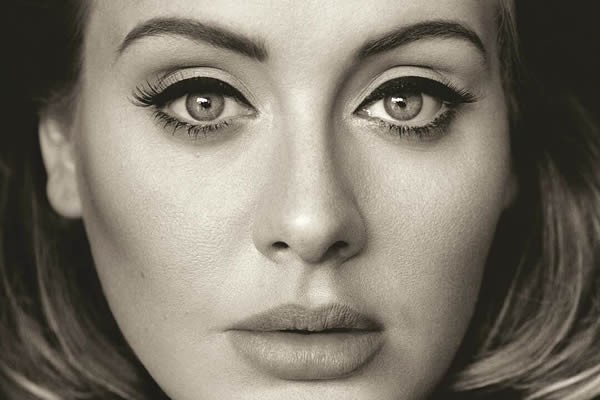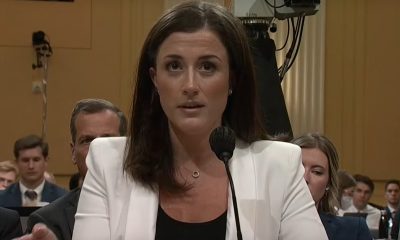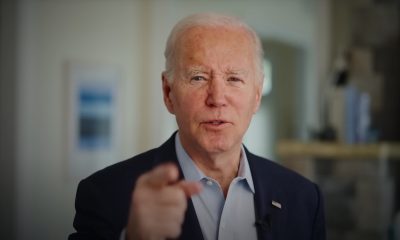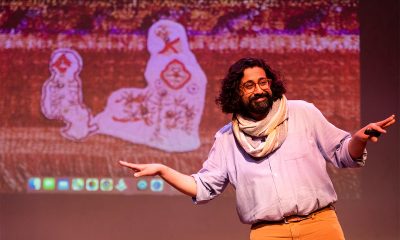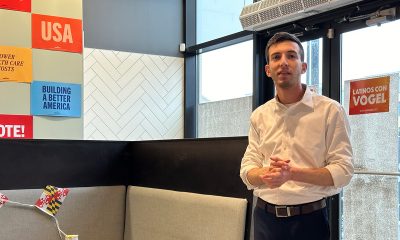Arts & Entertainment
Adele announces North American tour
the songstress will perform in D.C. next fall
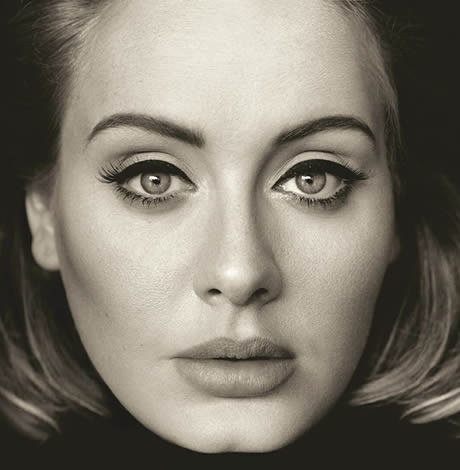
Adele announced on Monday morning that she is embarking on a North American tour in support of her latest album “25.”
And of course…..? https://t.co/nGJmSdSsIC
— Adele (@Adele) December 14, 2015
The “Hello” singer will bring her tour to the District for a two-night affair at the Verizon Center on Oct. 10 and 11. The tour kicks off on July 5 in St. Paul., Minn. Tickets go on sale Thursday.
If you can’t wait to see her live, Adele will be performing songs from “25” for “Adele Live in New York City” from Radio City Music Hall airing on Monday night at 10 p.m. on NBC.
See all the North American dates below.
July 5 St Paul, MN Xcel Energy Center
July 6 St Paul, MN Xcel Energy Center
July 10 Chicago, IL United Center
July 11 Chicago, IL United Center
July 13 Chicago, IL United Center
July 16 Denver, CO Pepsi Center
July 17 Denver, CO Pepsi Center
July 20 Vancouver, BC Pepsi Live at Rogers Arena
July 21 Vancouver, BC Pepsi Live at Rogers Arena
July 25 Seattle, WA KeyArena
July 26 Seattle, WA KeyArena
July 30 San Jose, CA SAP Center at San Jose
July 31 San Jose, CA SAP Center at San Jose
August 2 Oakland, CA Oracle Arena
August 5 Los Angeles, CA Staples Center
August 6 Los Angeles, CA Staples Center
August 9 Los Angeles, CA Staples Center
August 10 Los Angeles, CA Staples Center
August 12 Los Angeles, CA Staples Center
August 13 Los Angeles, CA Staples Center
August 16 Phoenix, AZ Talking Stick Resort Arena
August 17 Phoenix, AZ Talking Stick Resort Arena
September 6 Auburn Hills, MI The Palace of Auburn Hills
September 7 Auburn Hills, MI The Palace of Auburn Hills
September 9 Philadelphia, PA Wells Fargo Center
September 10 Philadelphia, PA Wells Fargo Center
September 14 Boston, MA TD Garden
September 15 Boston, MA TD Garden
September 19 New York, NY Madison Square Garden
September 20 New York, NY Madison Square Garden
September 22 New York, NY Madison Square Garden
September 23 New York, NY Madison Square Garden
September 25 New York, NY Madison Square Garden
September 26 New York, NY Madison Square Garden
September 30 Montreal, QC Bell Centre
October 1 Montreal, QC Bell Centre
October 3 Toronto, ON Air Canada Centre
October 4 Toronto, ON Air Canada Centre
October 6 Toronto, ON Air Canada Centre
October 7 Toronto, ON Air Canada Centre
October 10 Washington, DC Verizon Center
October 11 Washington, DC Verizon Center
October 15 Nashville, TN Bridgestone Arena
October 16 Nashville, TN Bridgestone Arena
October 25 Miami, FL AmericanAirlines Arena
October 26 Miami, FL AmericanAirlines Arena
October 28 Atlanta, GA Philips Arena
October 29 Atlanta, GA Philips Arena
November 1 Dallas, TX American Airlines Center
November 2 Dallas, TX American Airlines Center
November 4 Austin, TX Frank Erwin Center
November 5 Austin, TX Frank Erwin Center
November 8 Houston, TX Toyota Center
November 9 Houston, TX Toyota Center
November 14 Mexico City, DF Palacio de los Deportes
November 15 Mexico City, DF Palacio de los Deportes
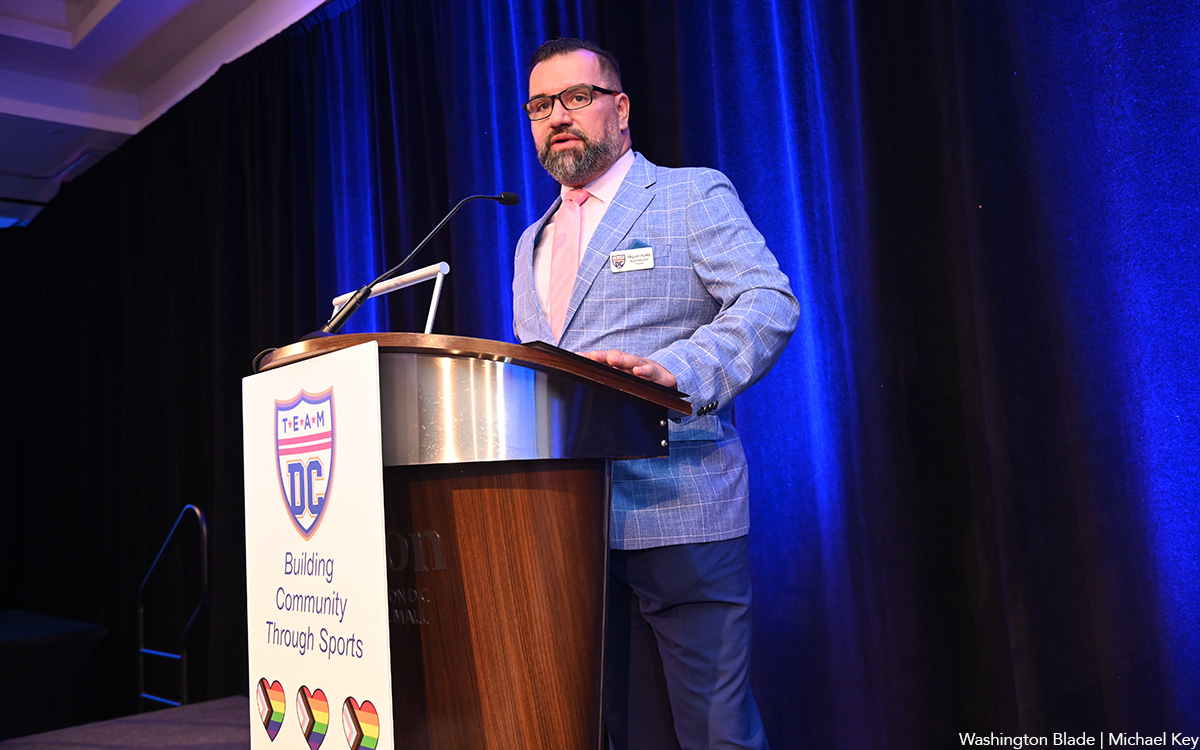
Team DC, the umbrella organization for LGBTQ-friendly sports teams and leagues in the D.C. area, held its annual Night of Champions Awards Gala on Saturday, April 20 at the Hilton National Mall. The organization gave out scholarships to area LGBTQ student athletes as well as awards to the Different Drummers, Kelly Laczko of Duplex Diner, Stacy Smith of the Edmund Burke School, Bryan Frank of Triout, JC Adams of DCG Basketball and the DC Gay Flag Football League.
(Washington Blade photos by Michael Key)
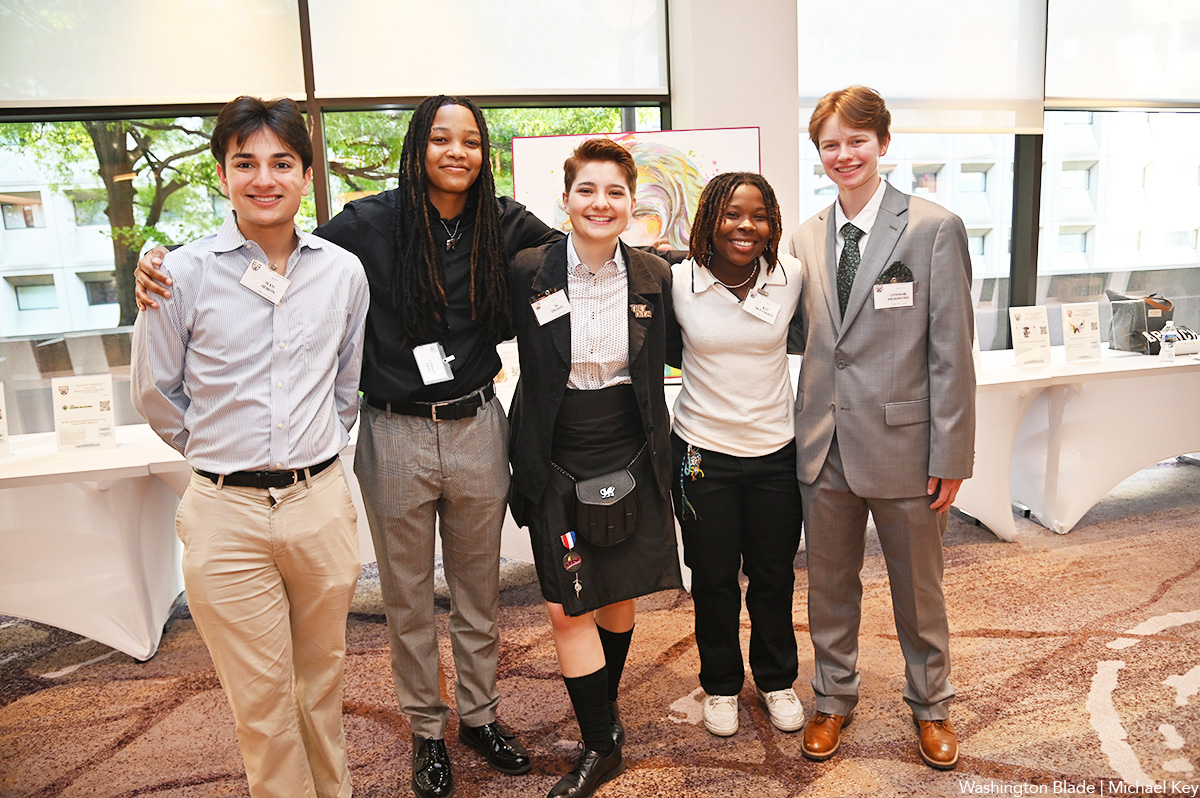
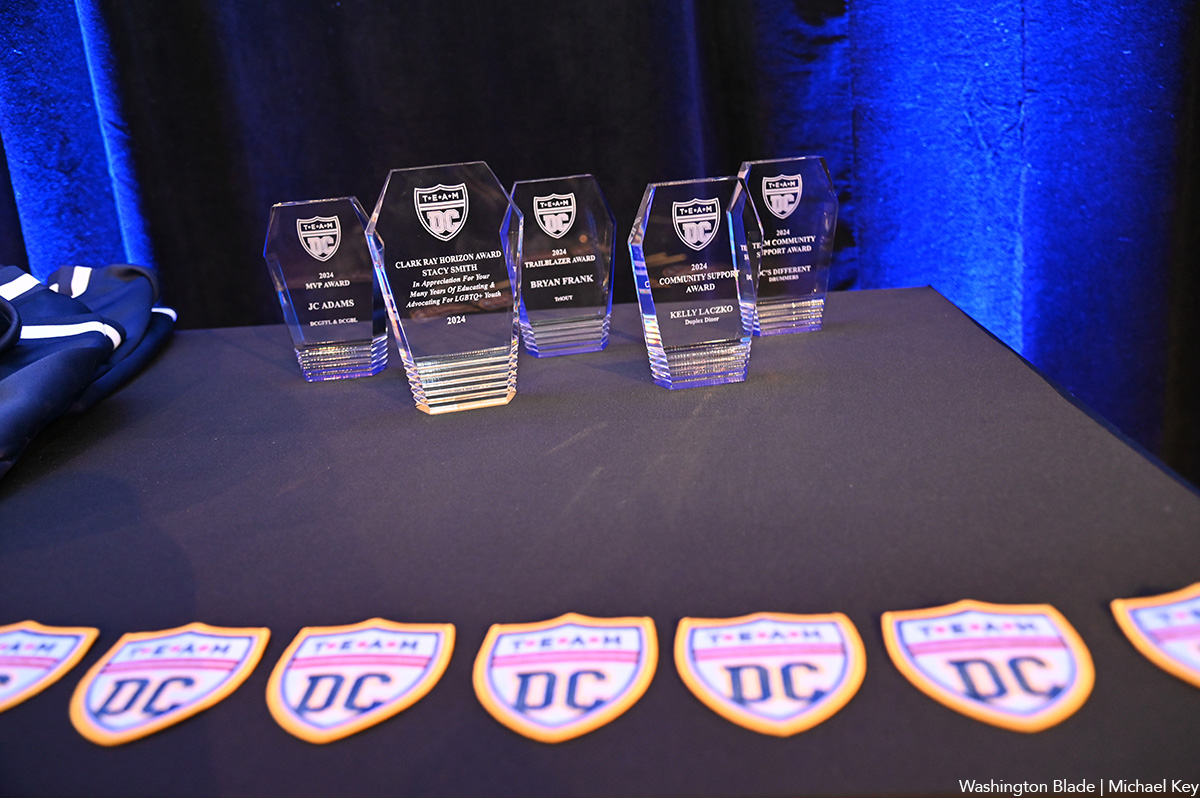
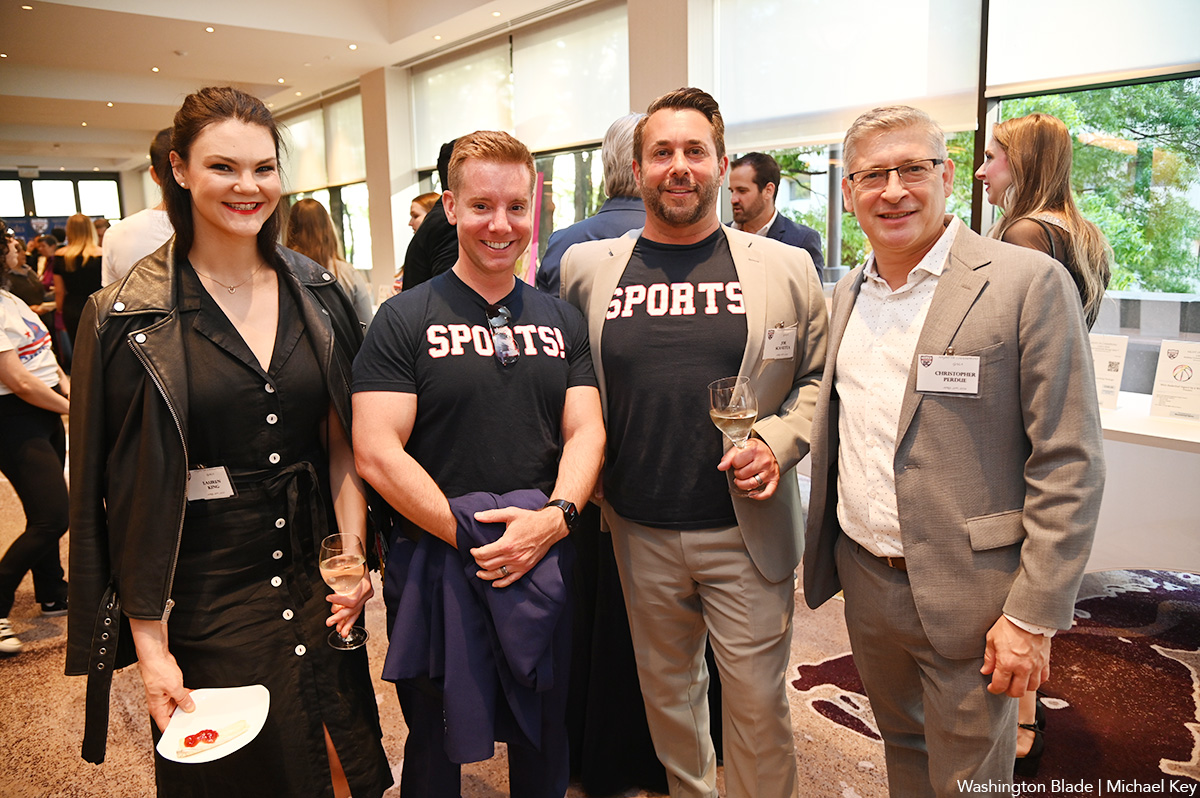
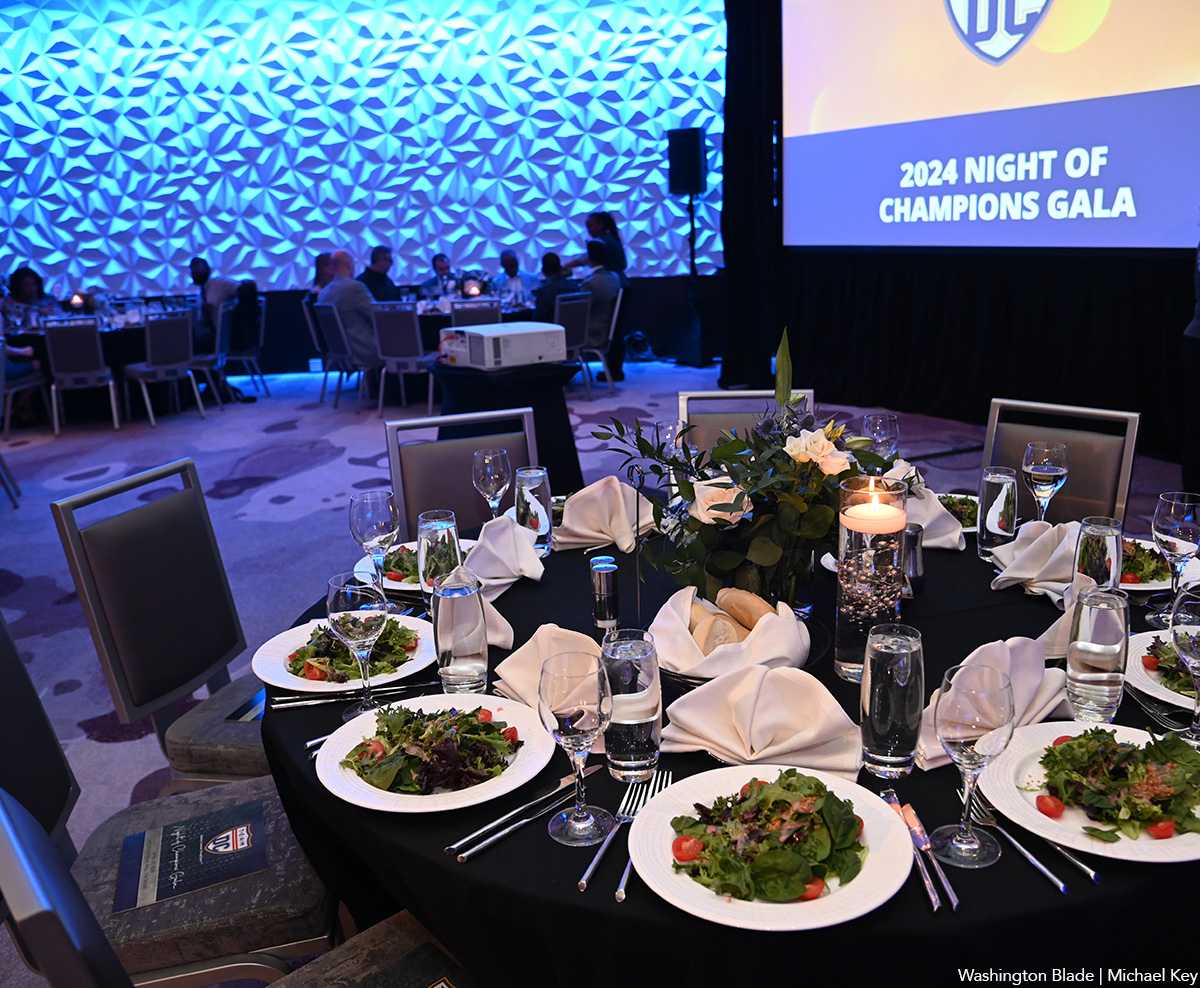
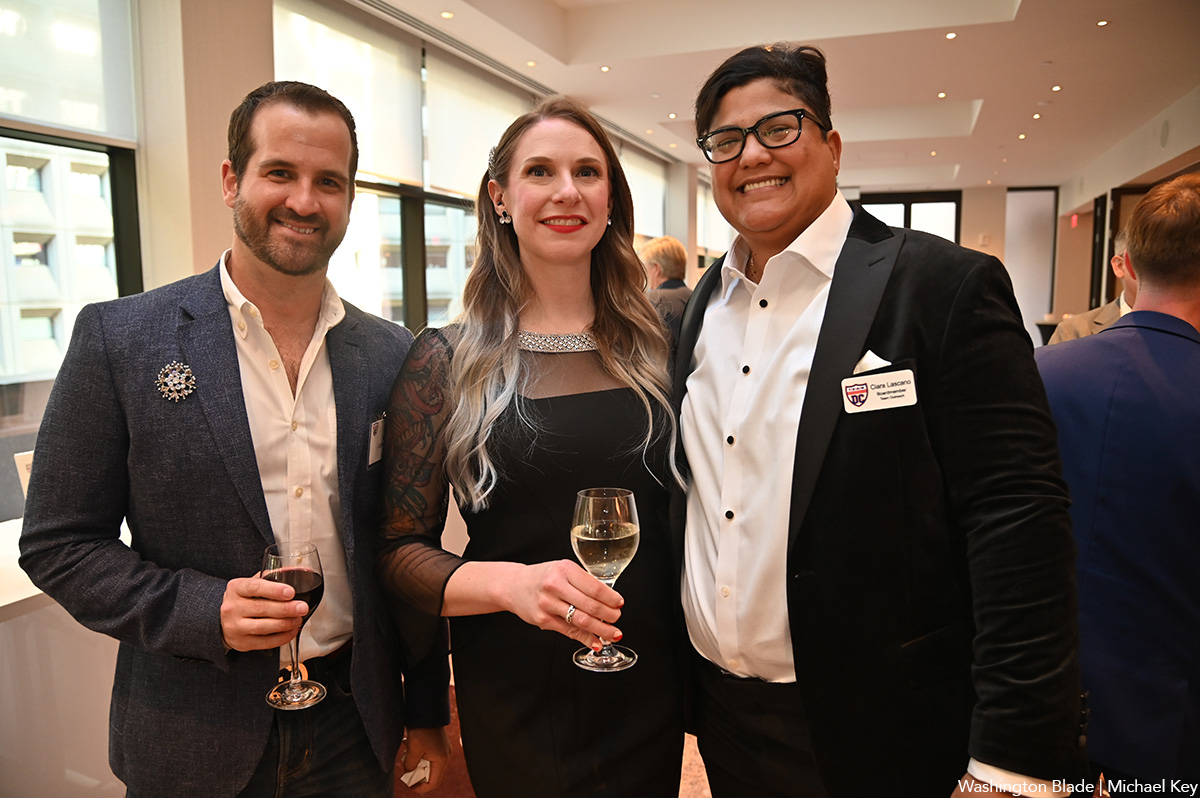
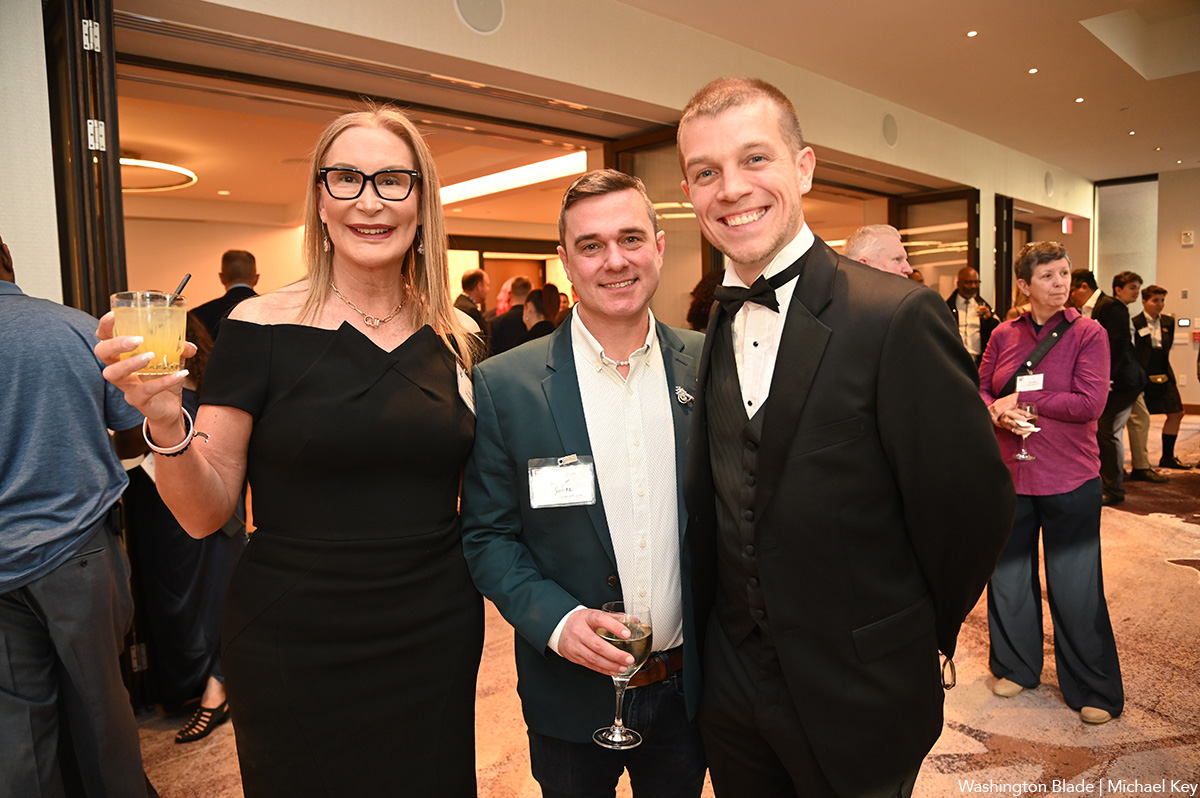
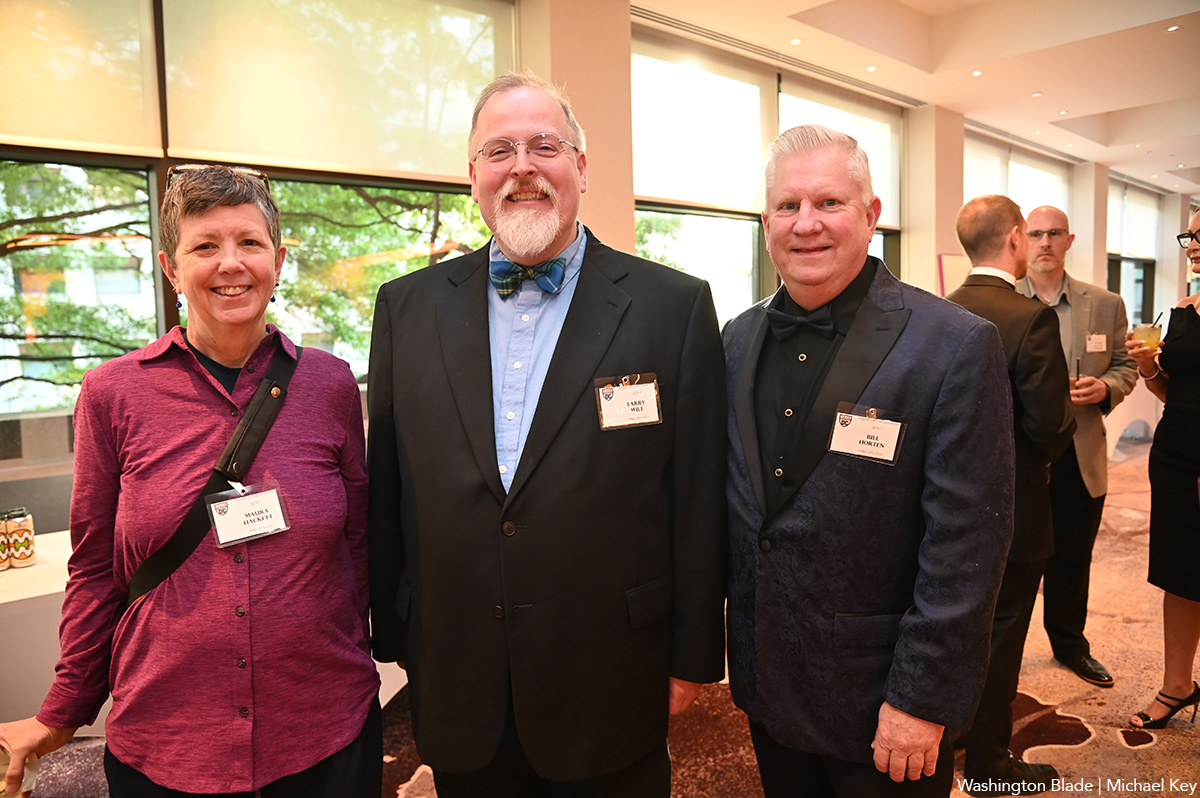
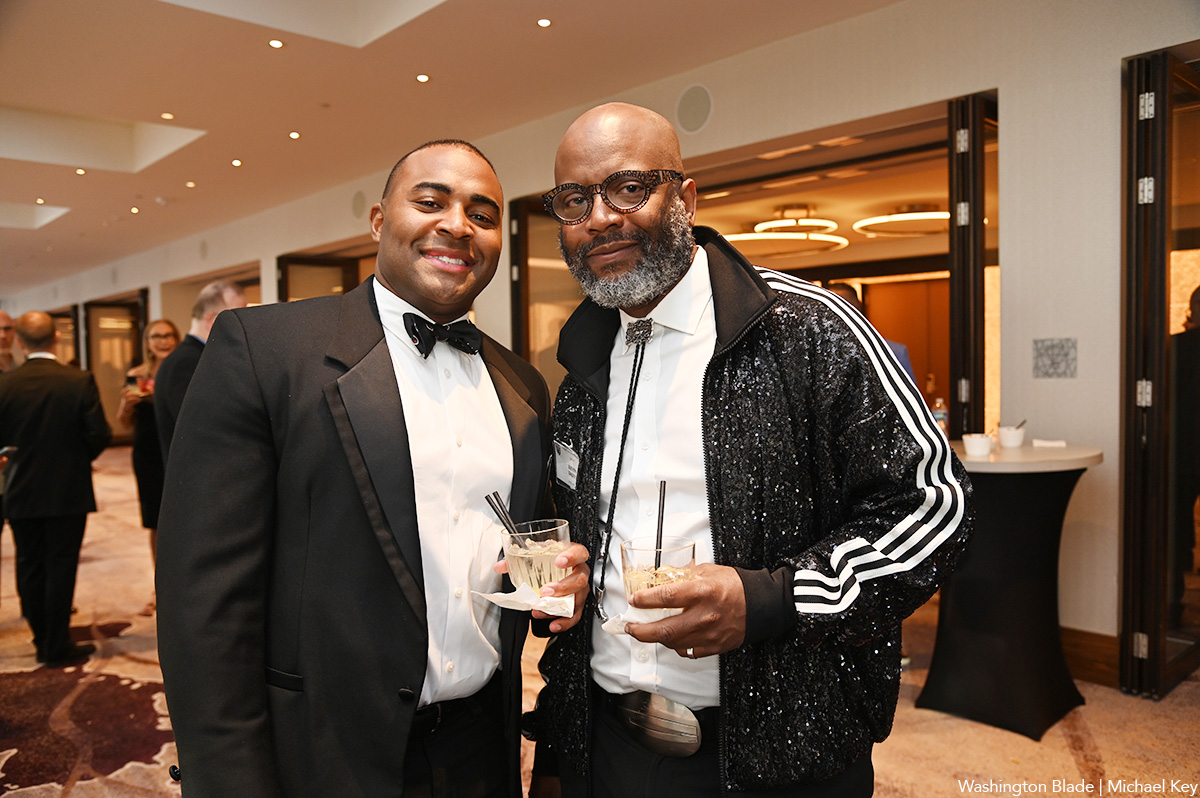
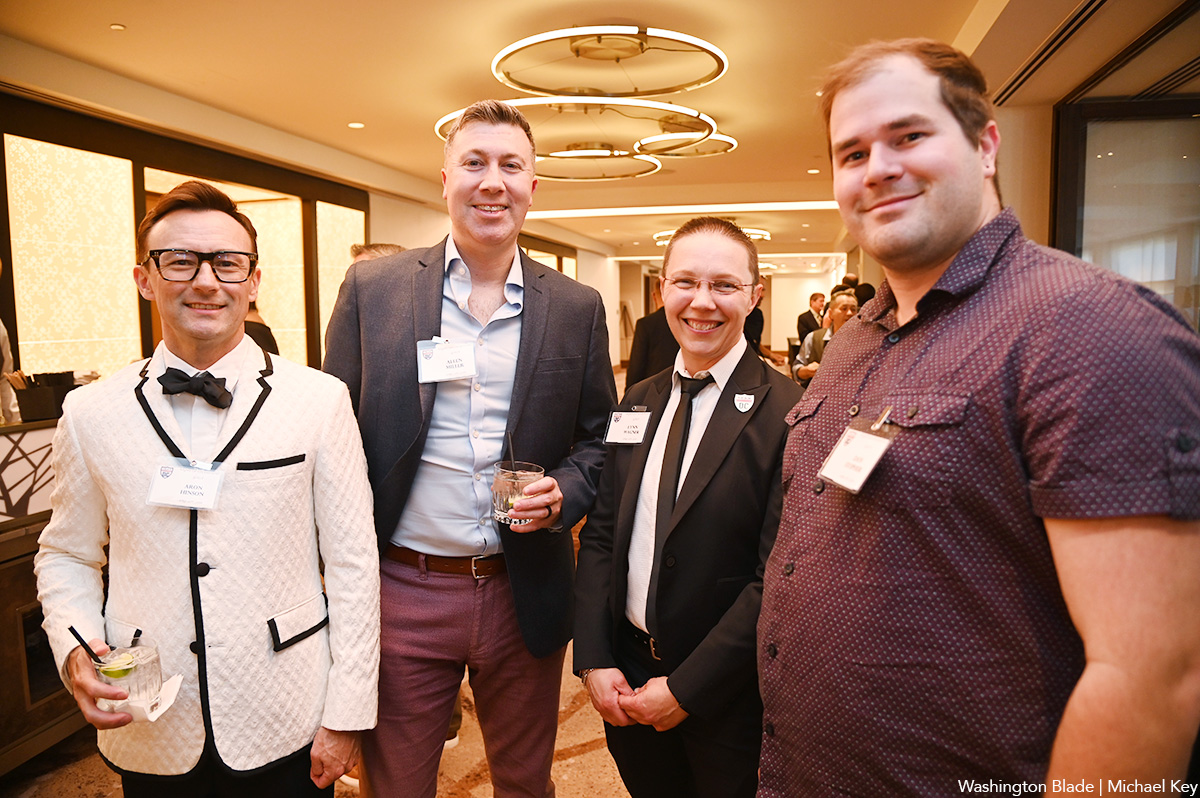
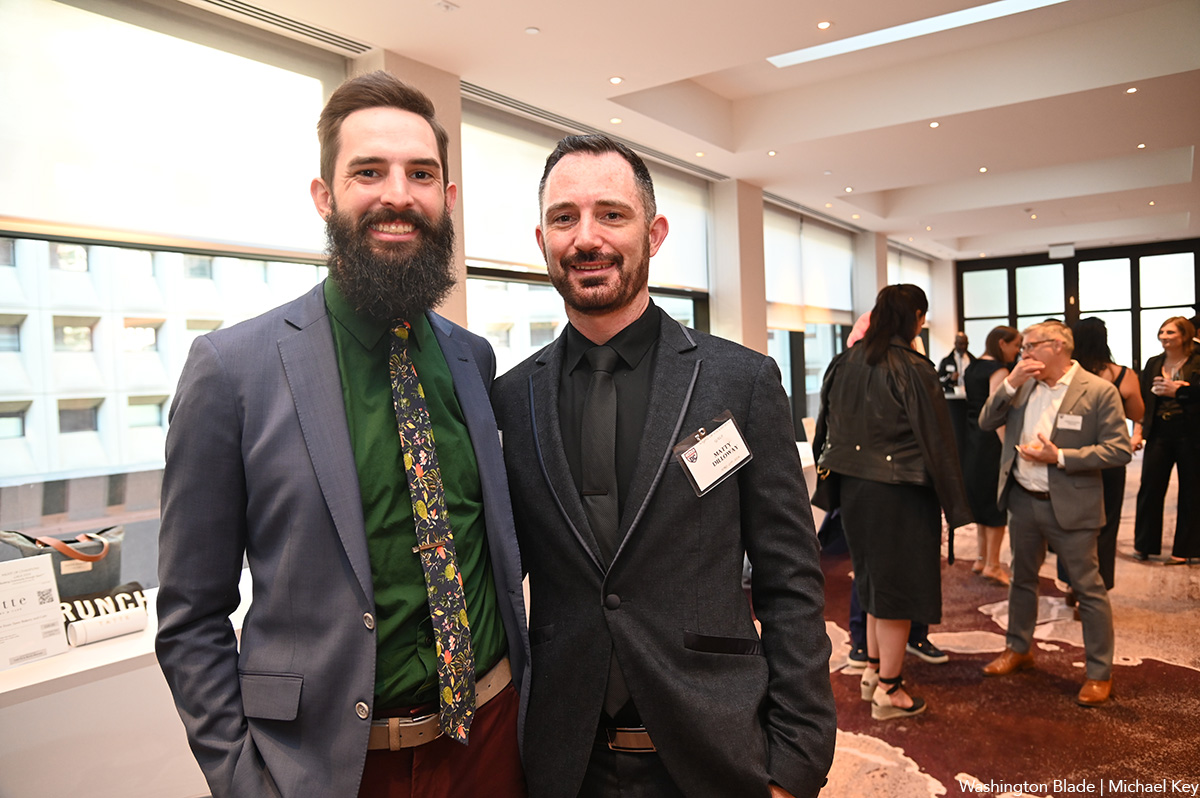
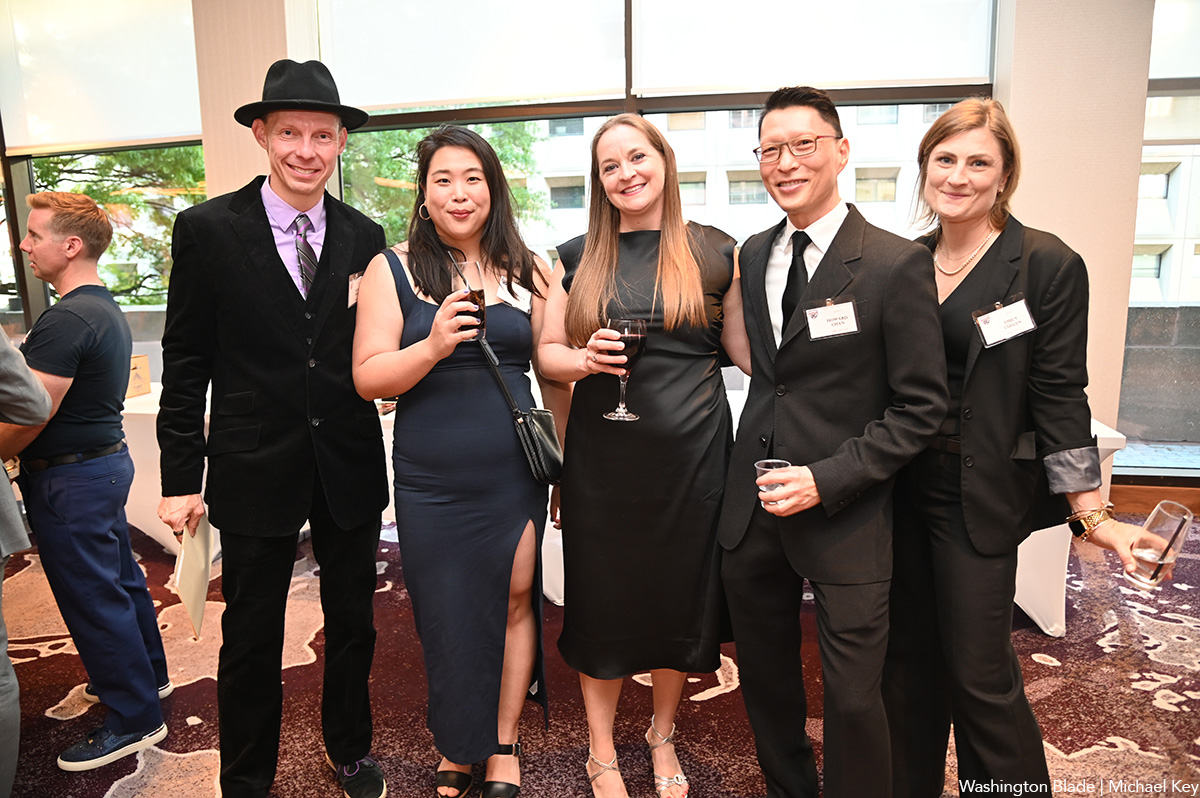
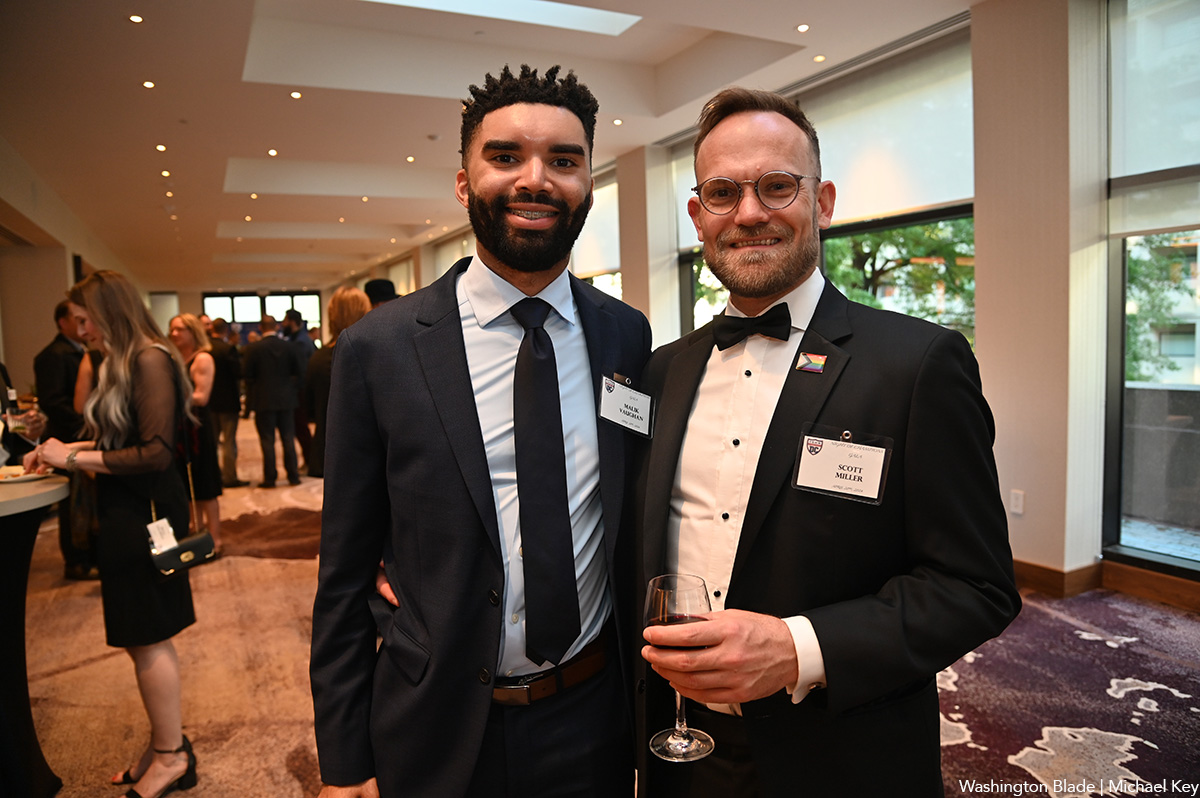
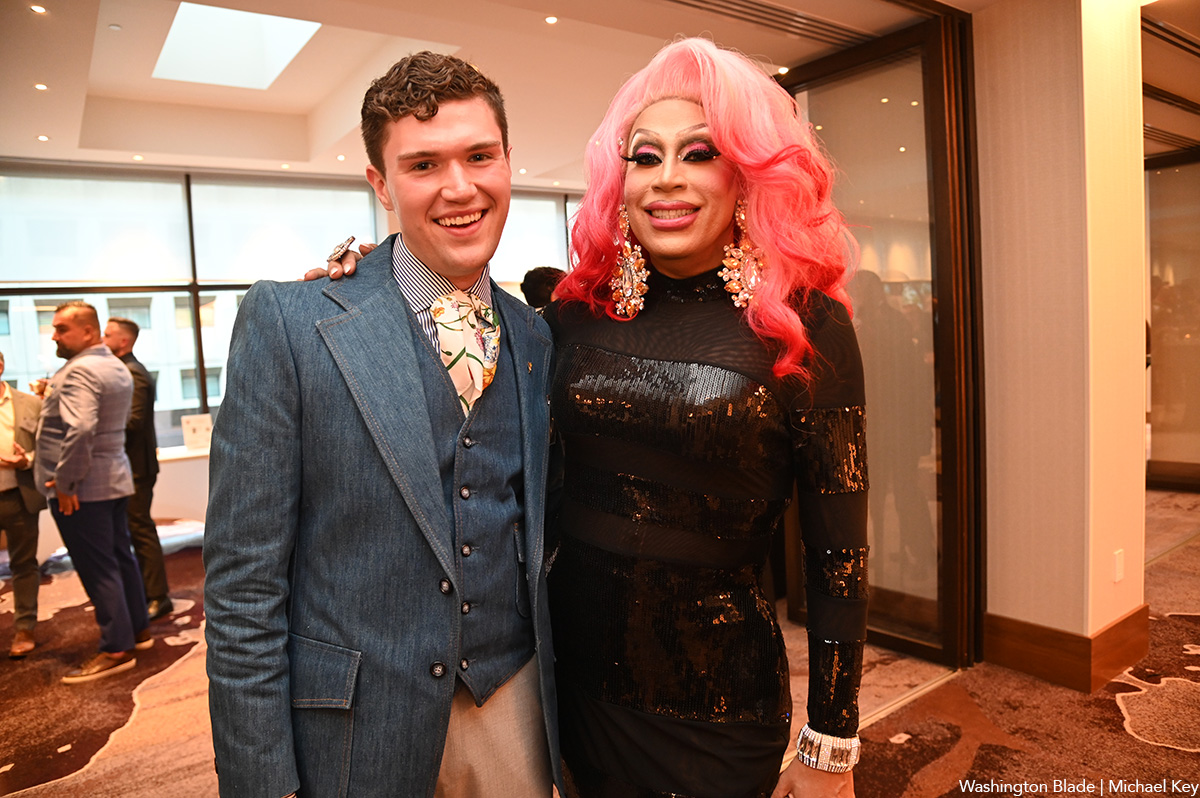
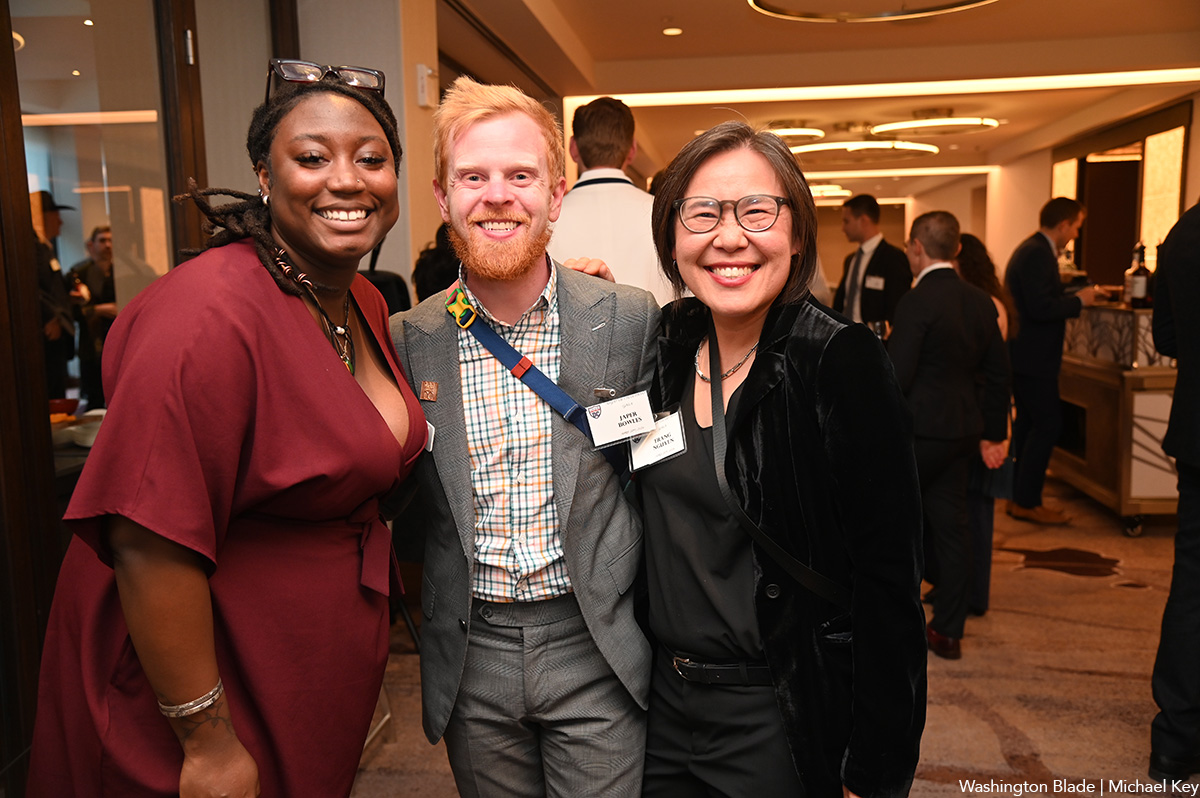
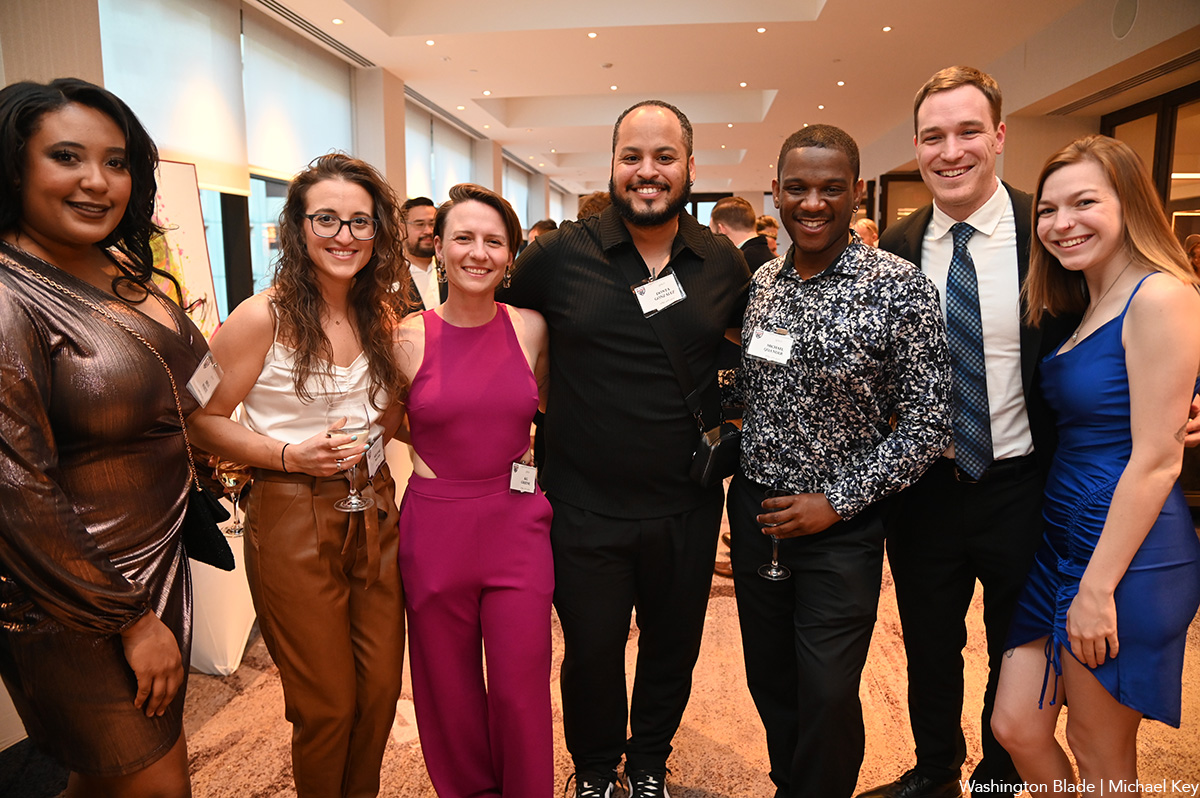
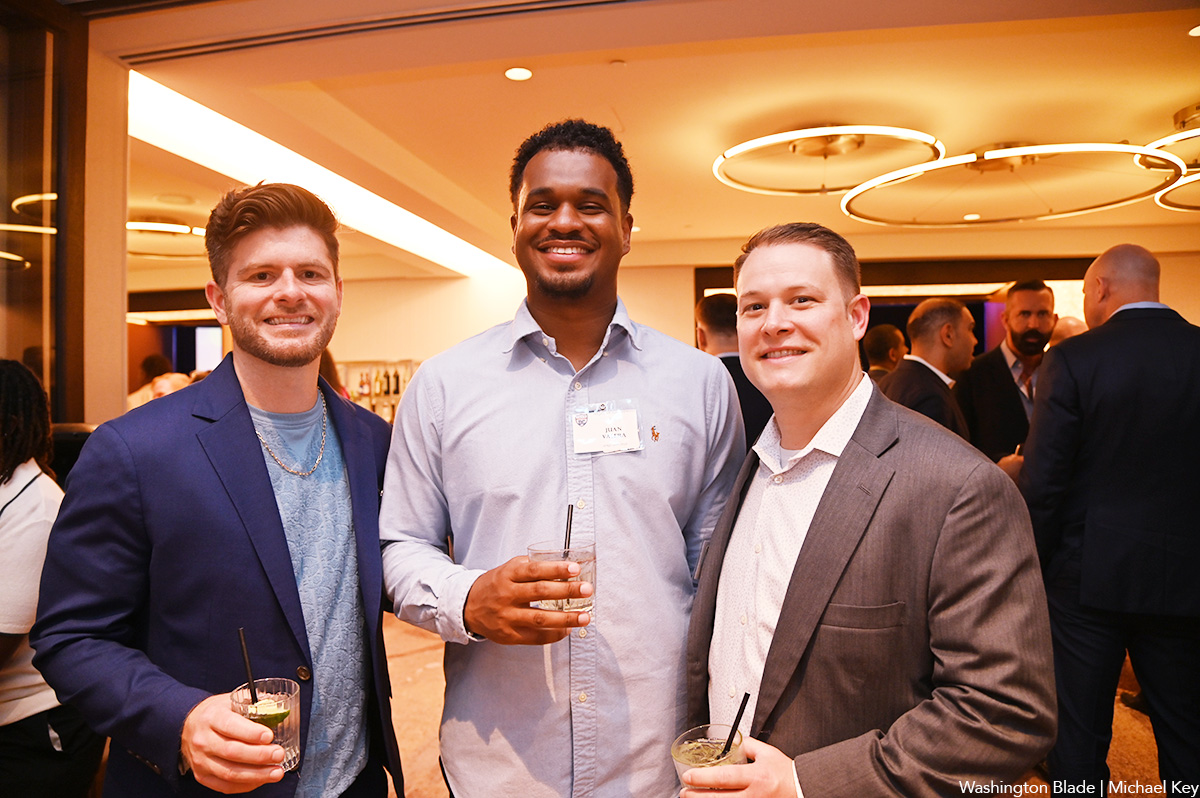
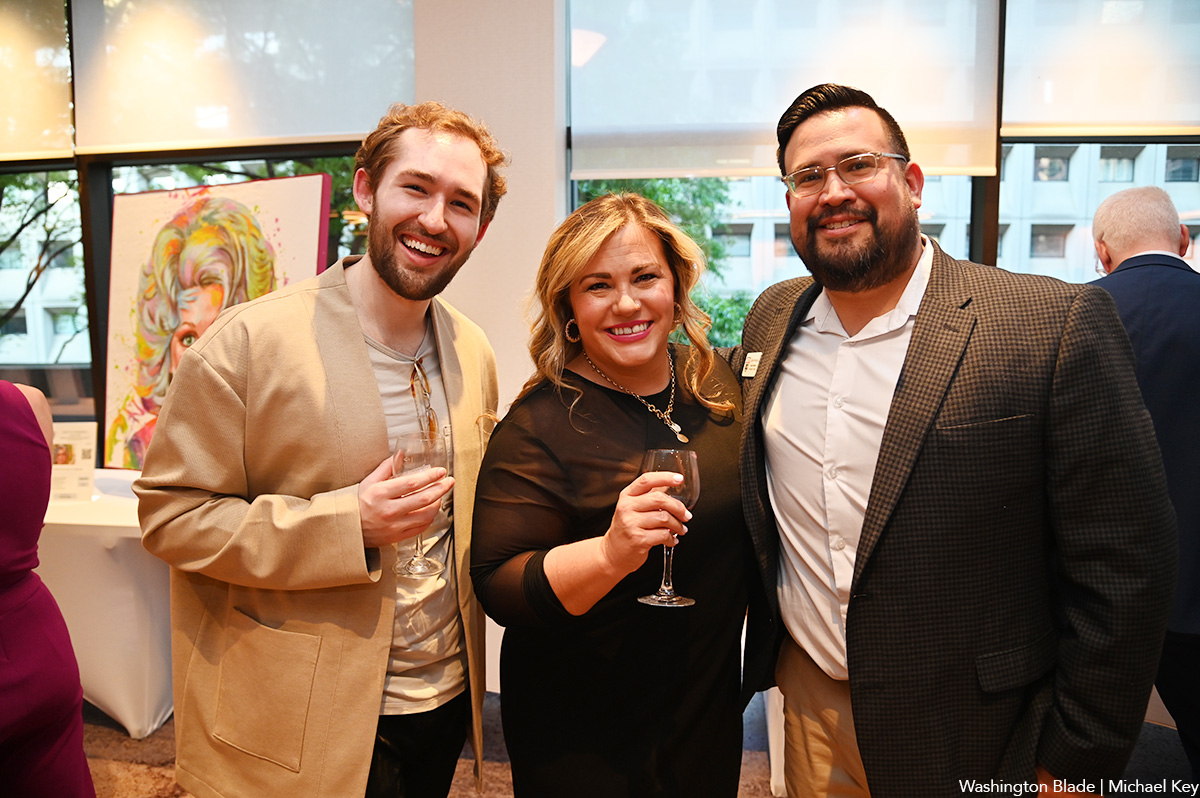
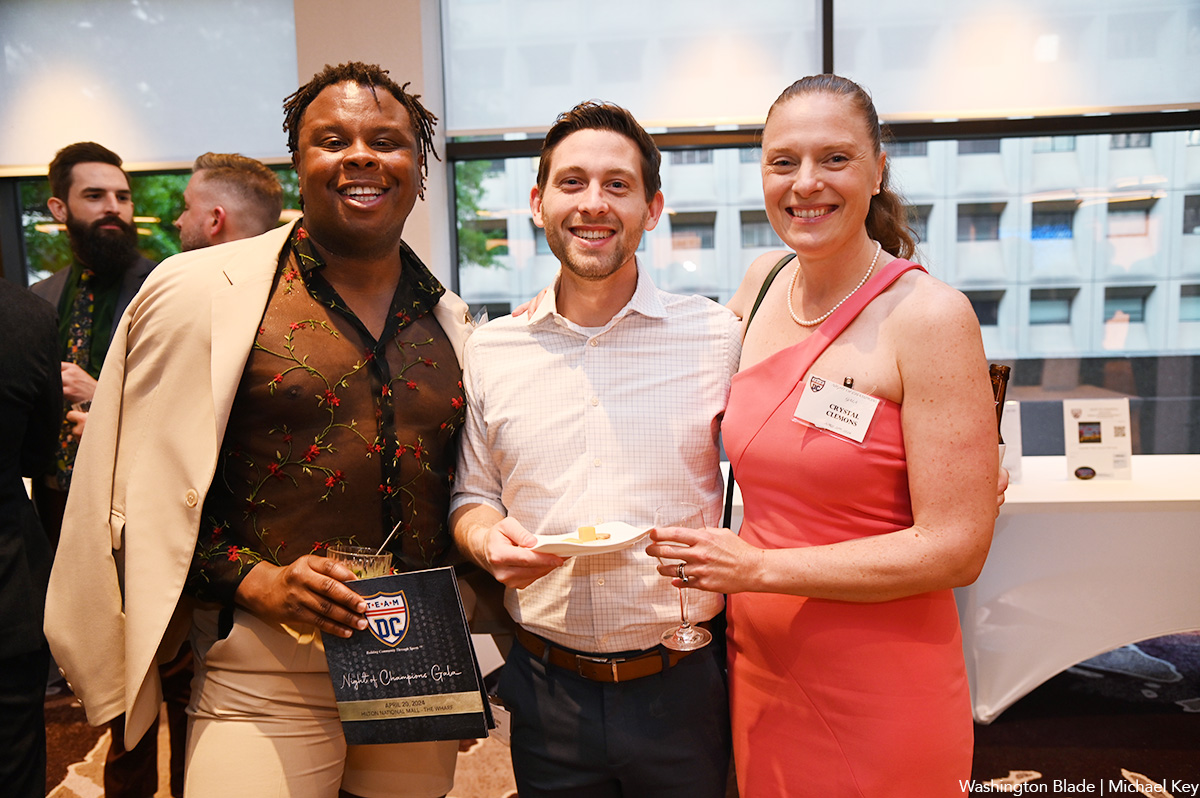
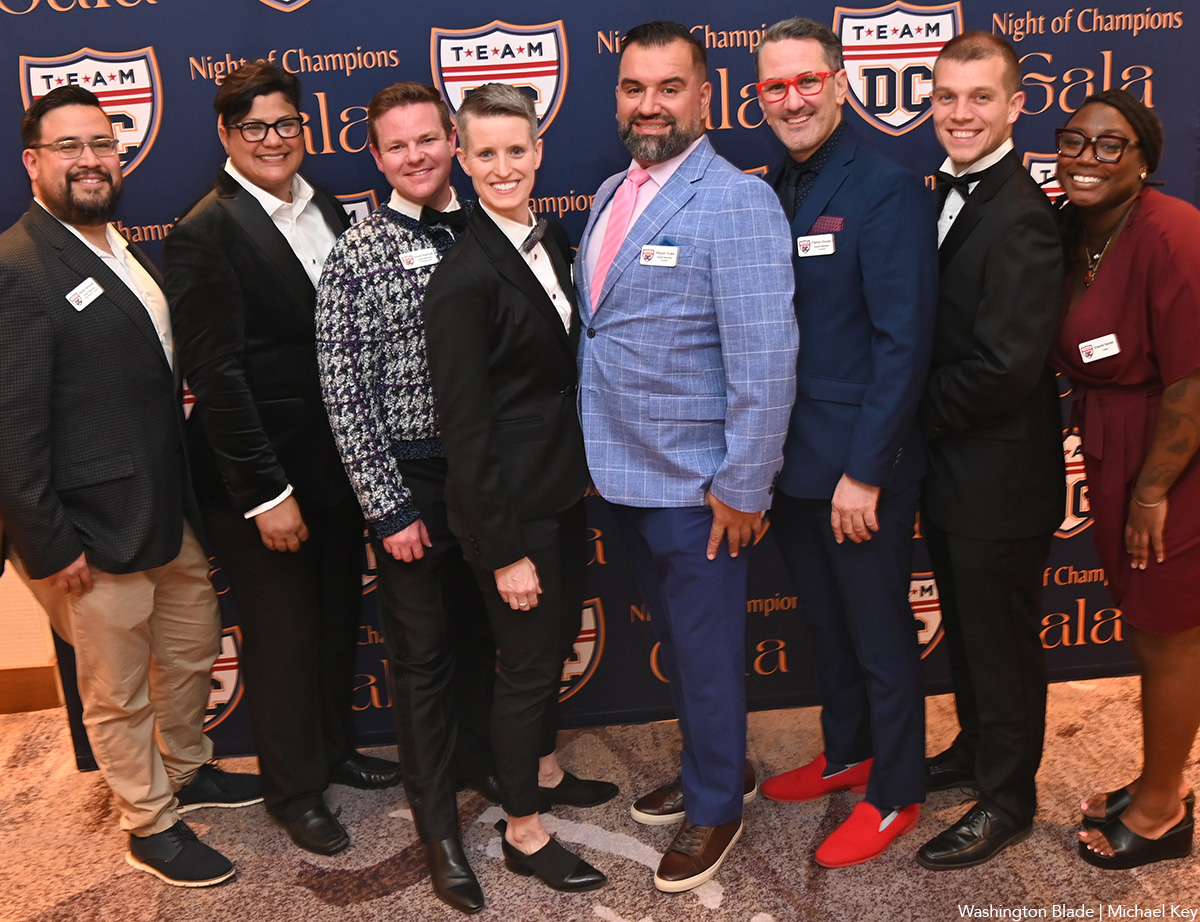
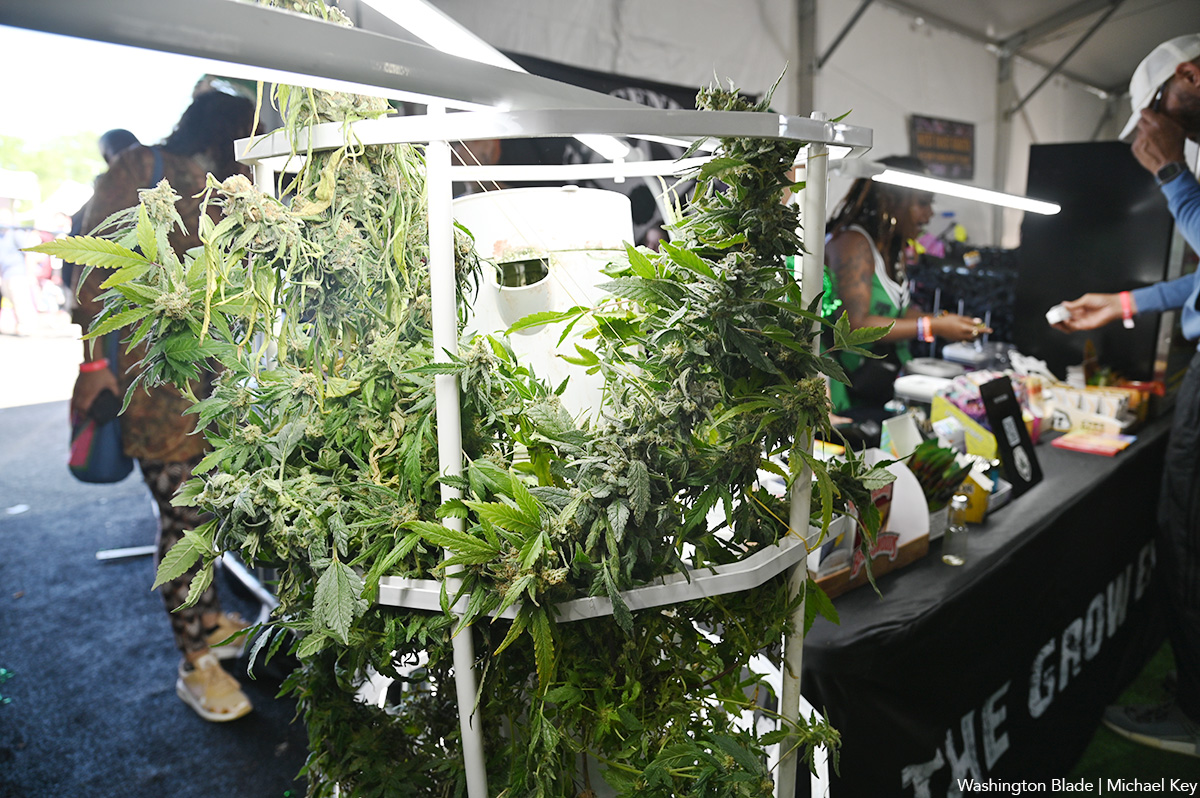
The 2024 National Cannabis Festival was held at the Fields at RFK Stadium on April 19-20.
(Washington Blade photos by Michael Key)
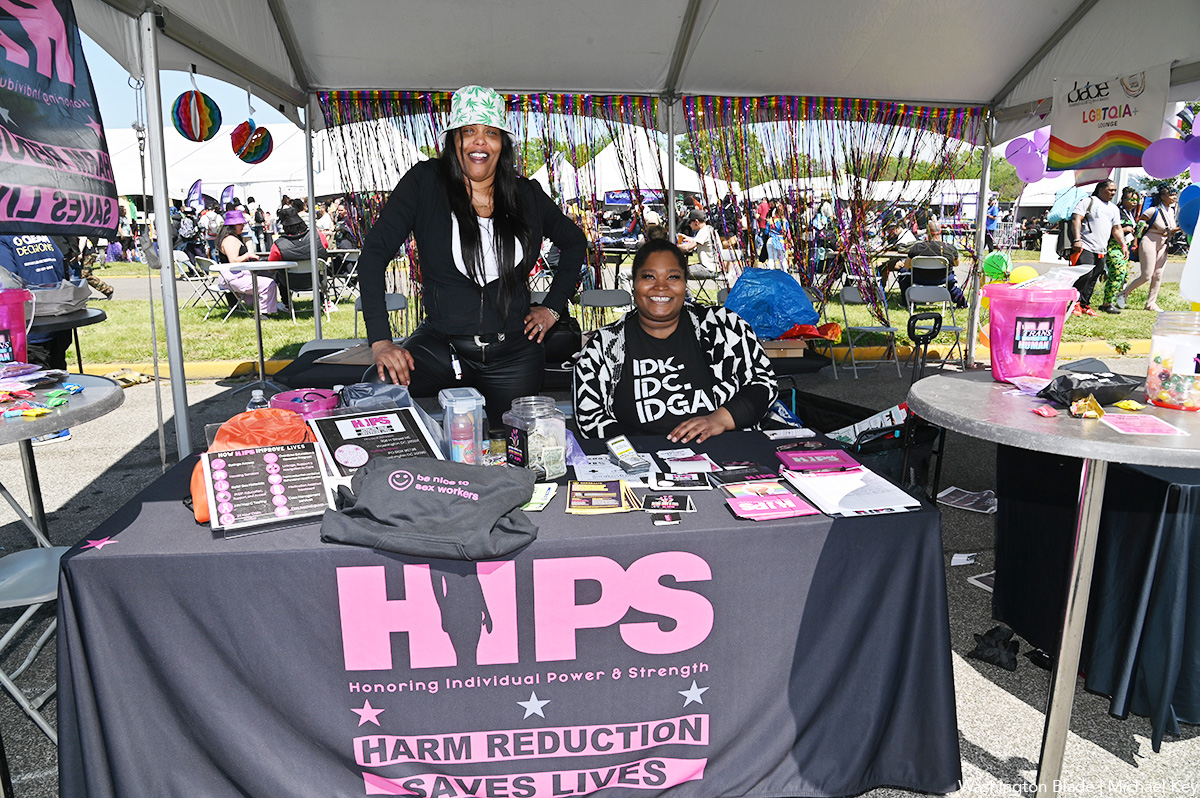
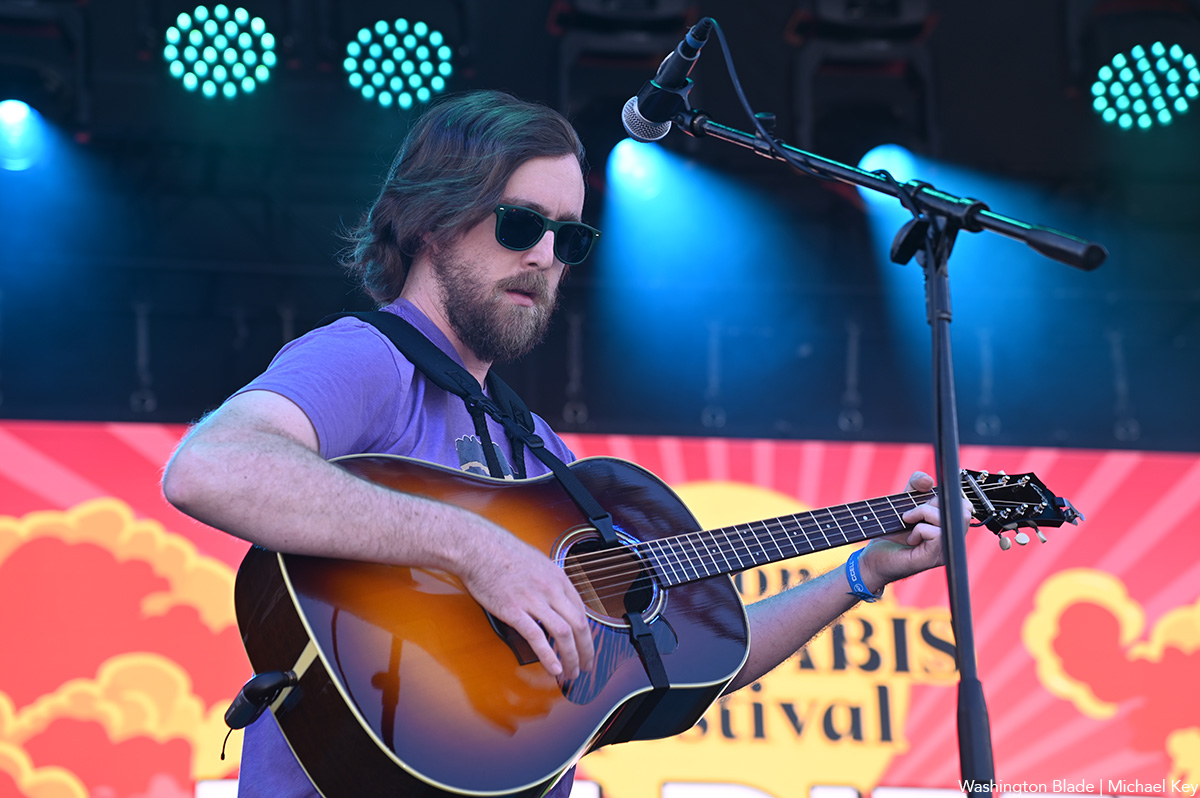
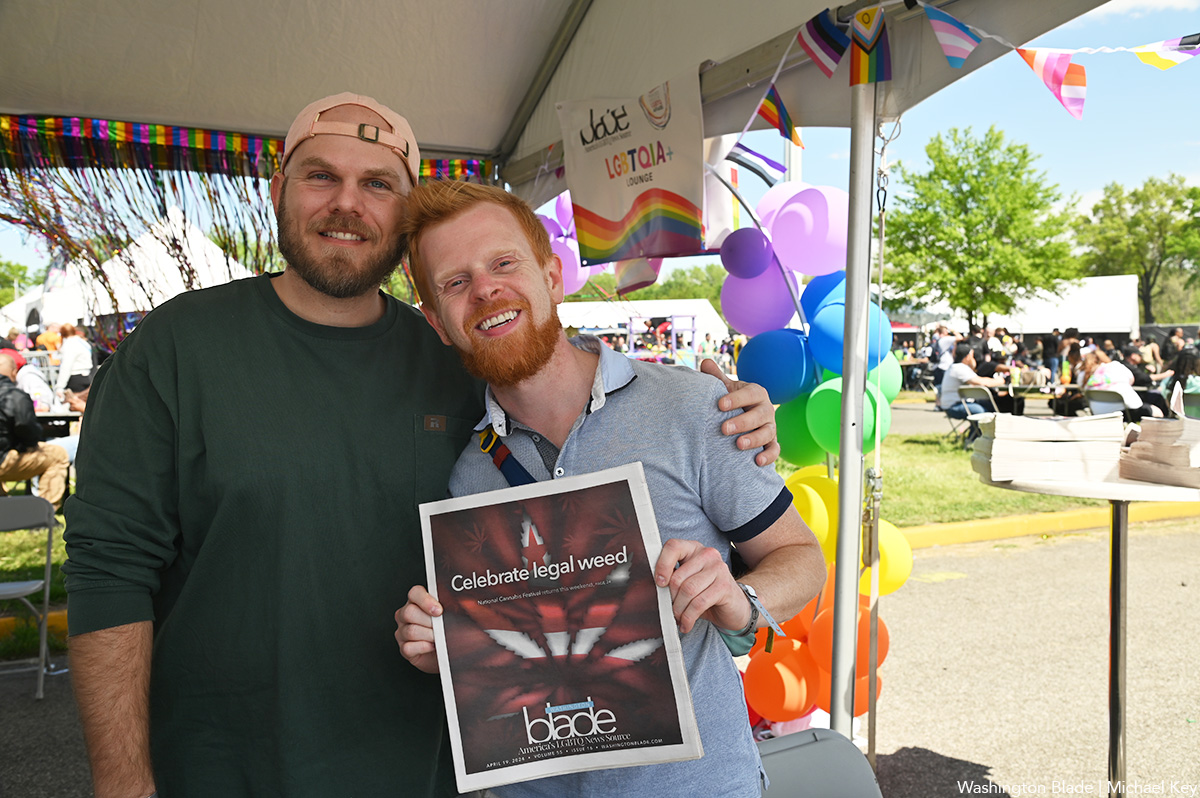
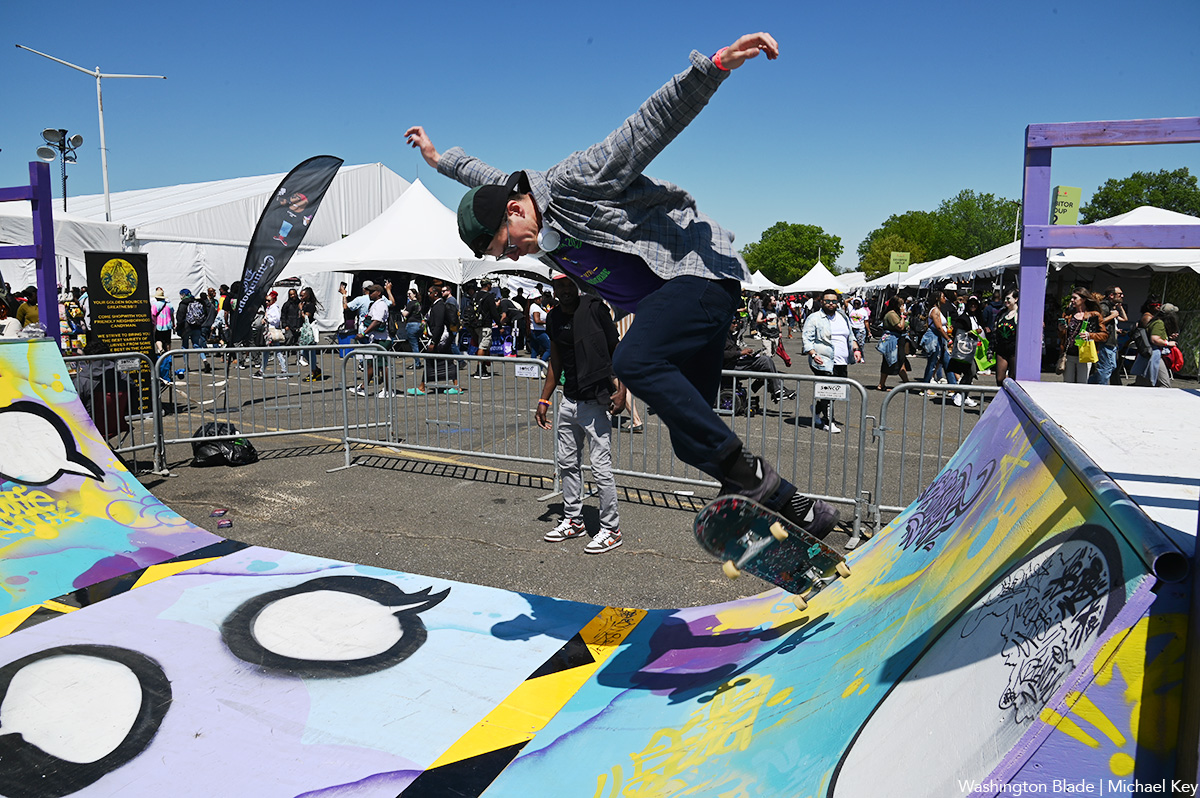
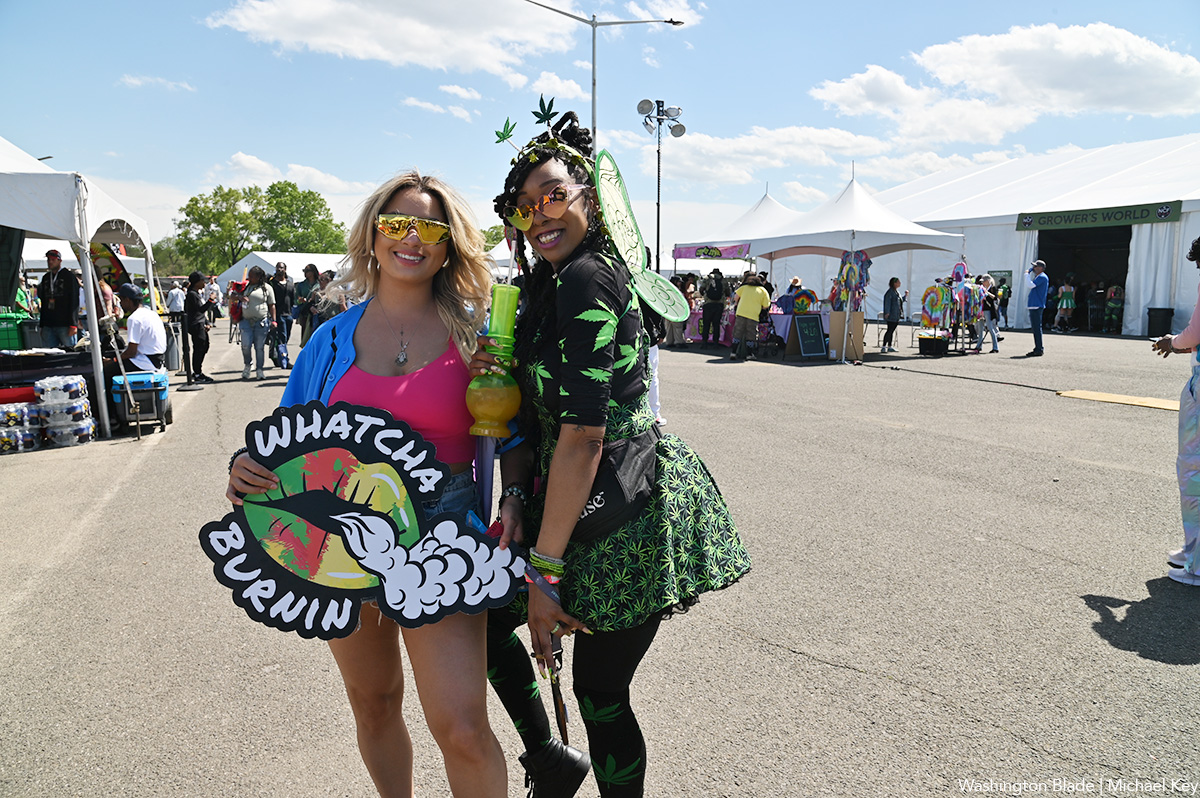
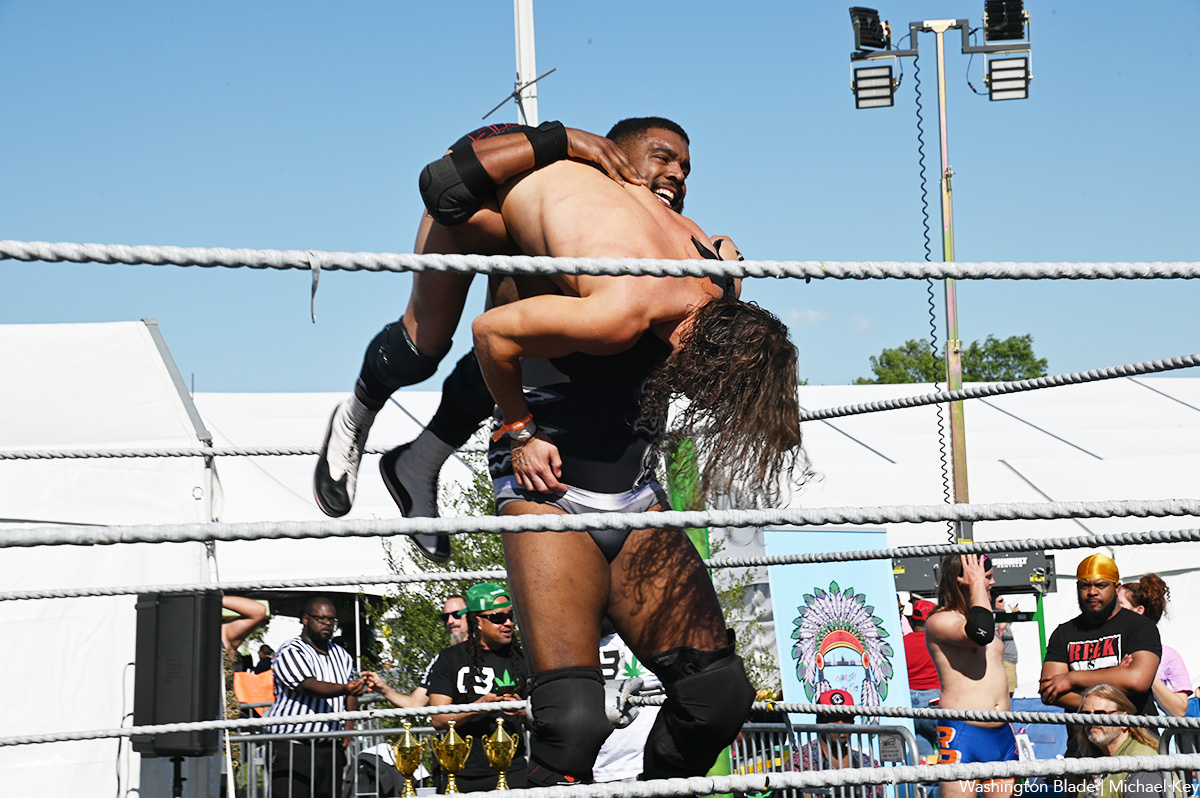
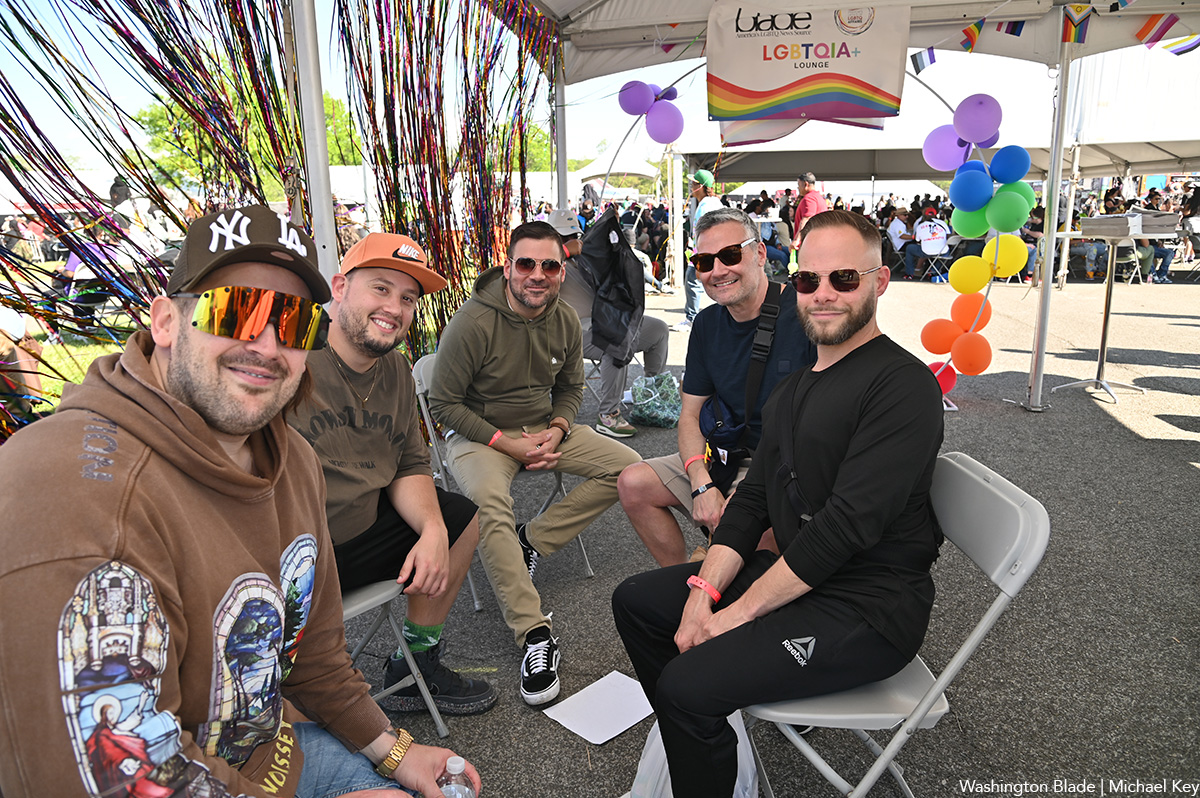
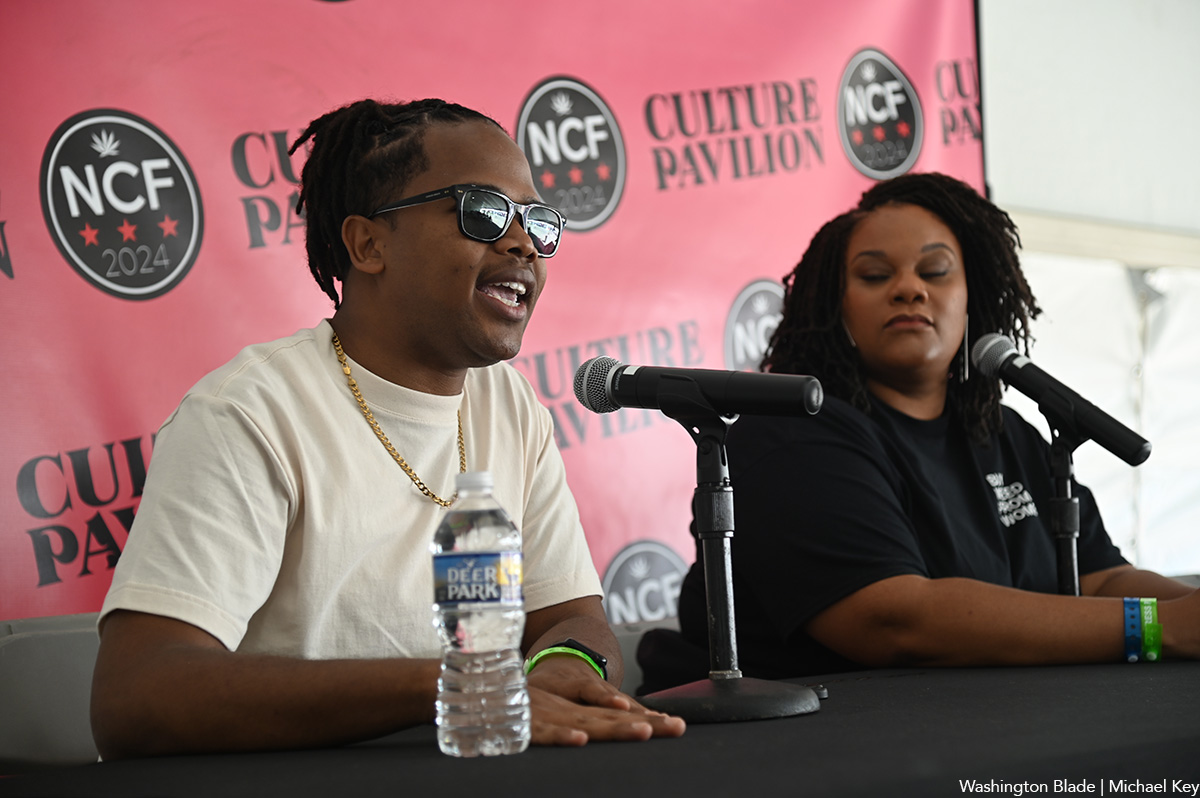
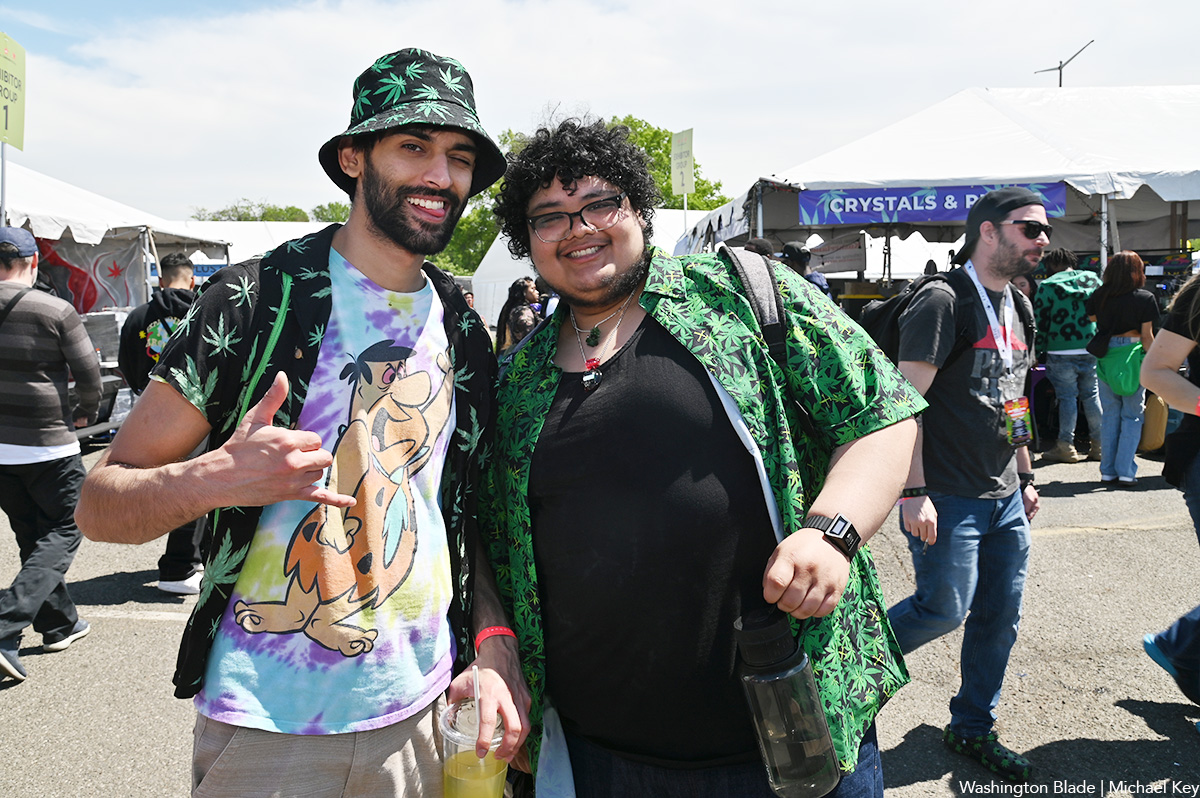
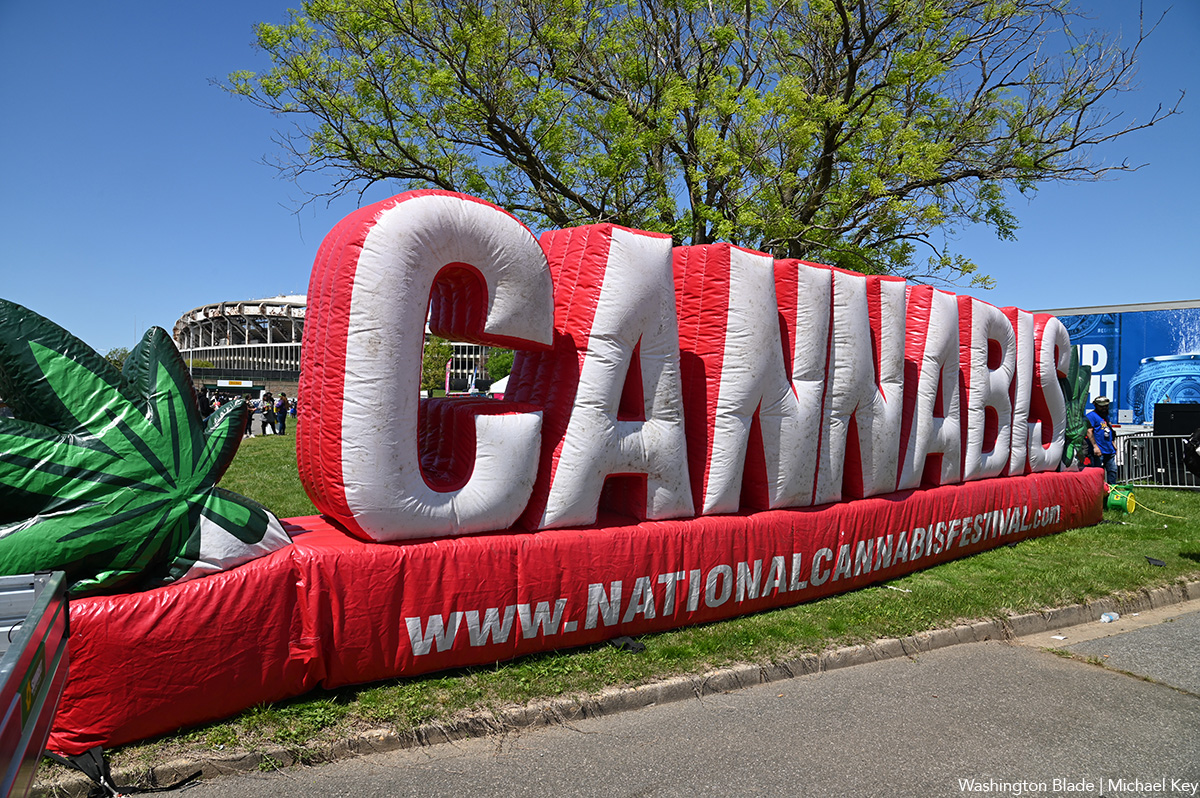
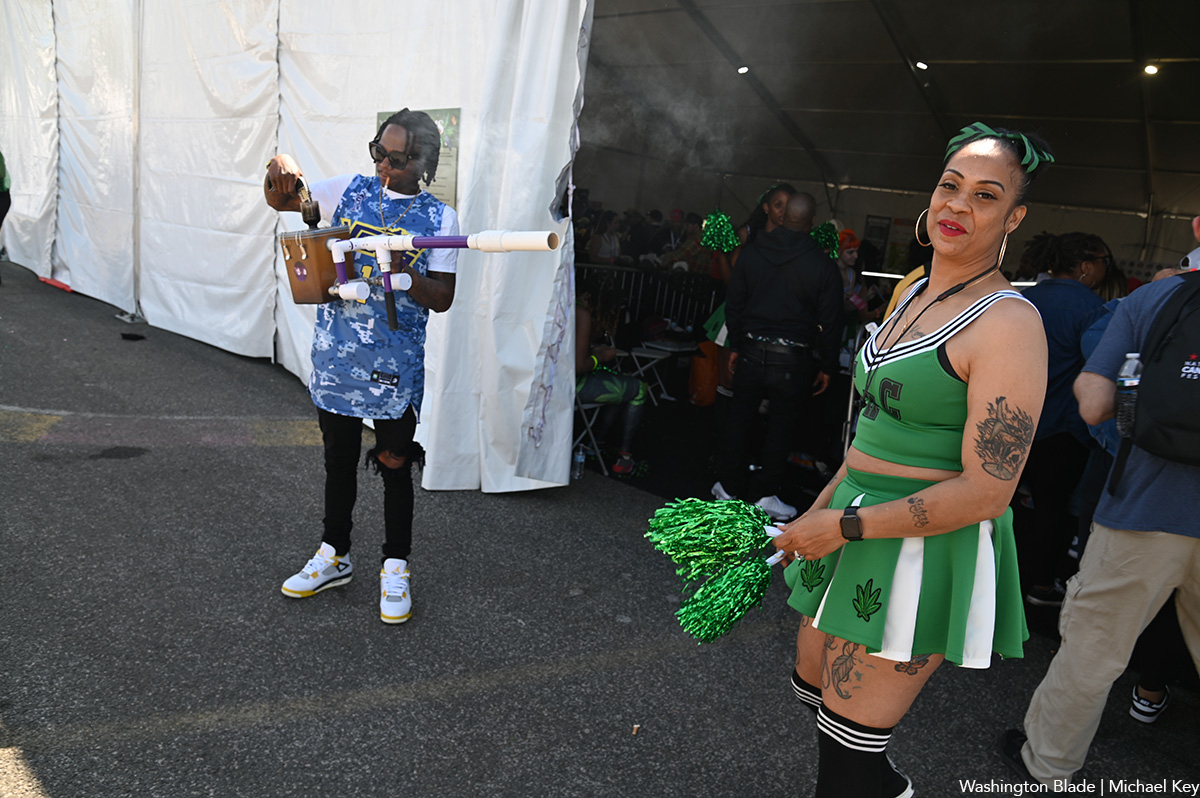
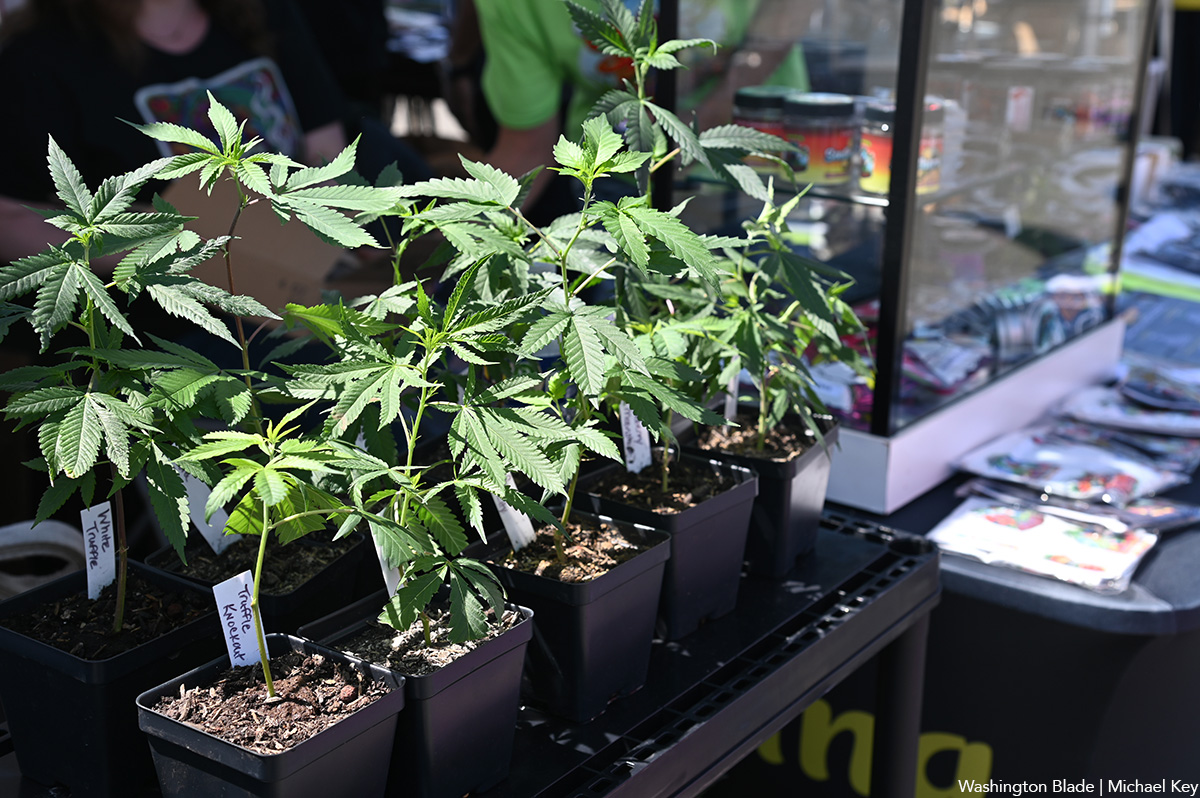
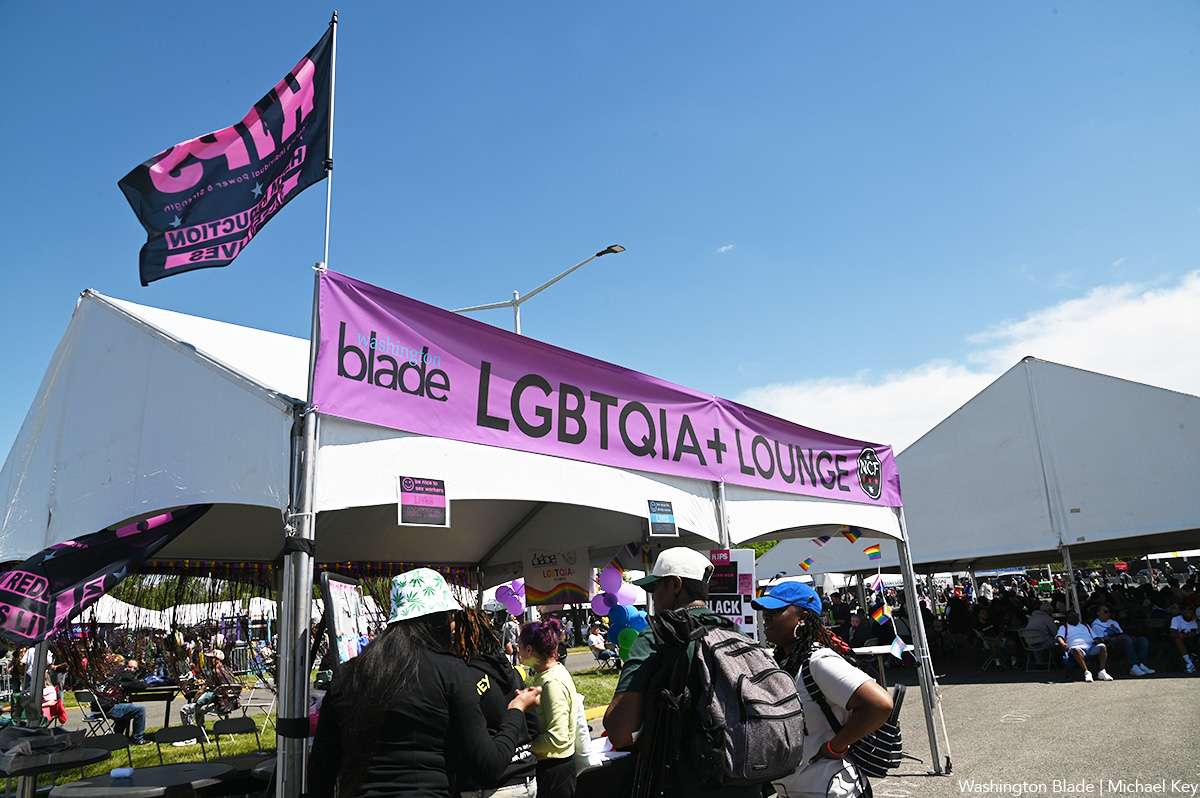
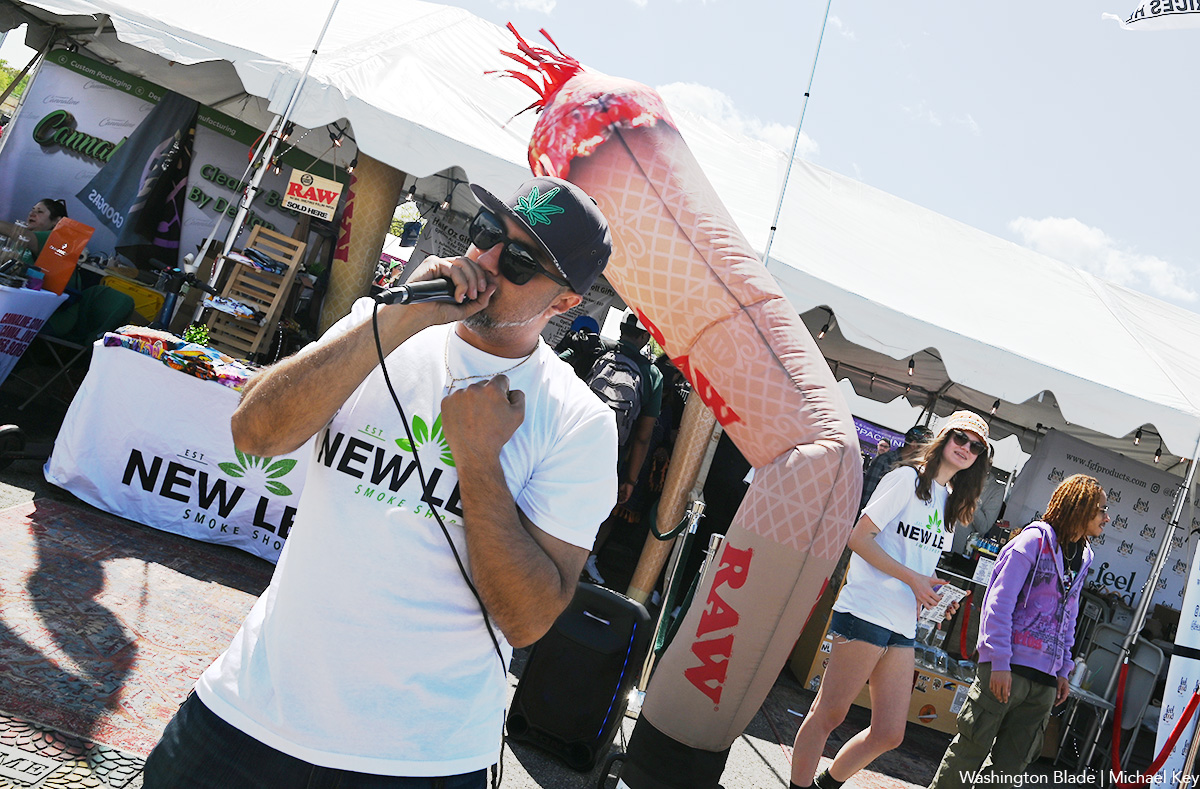
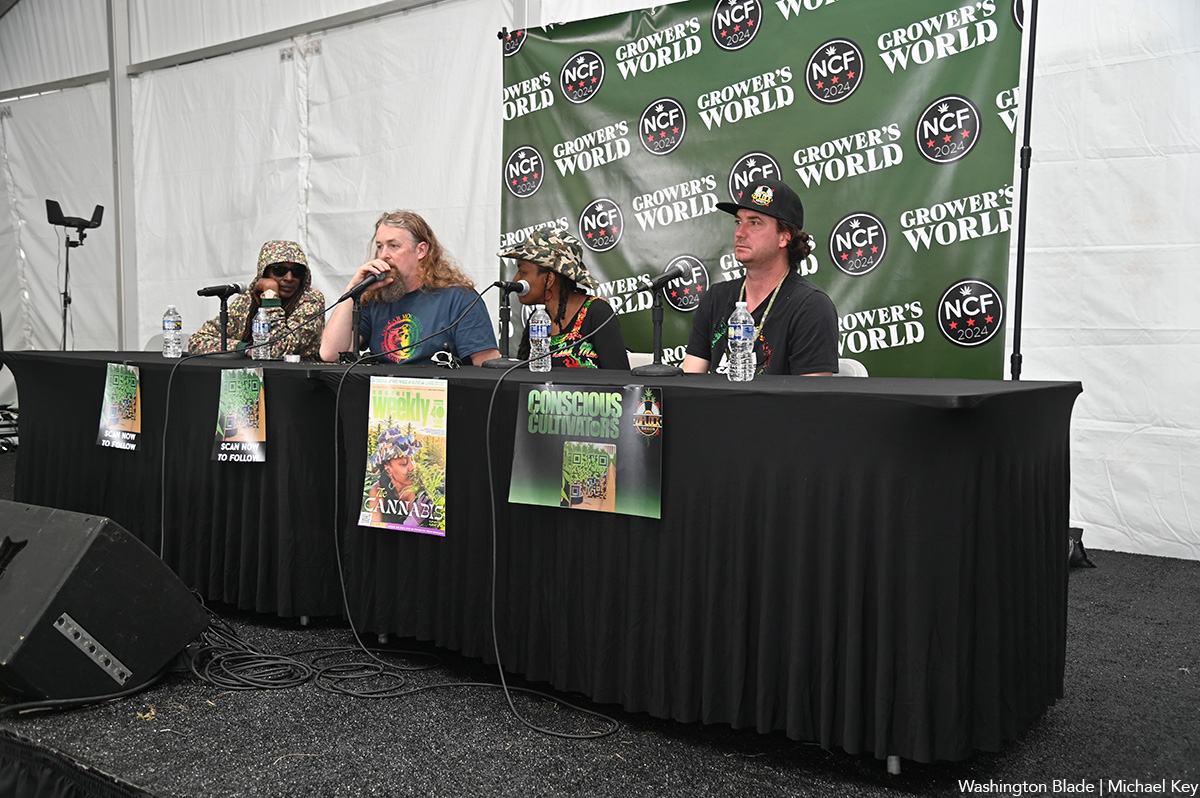
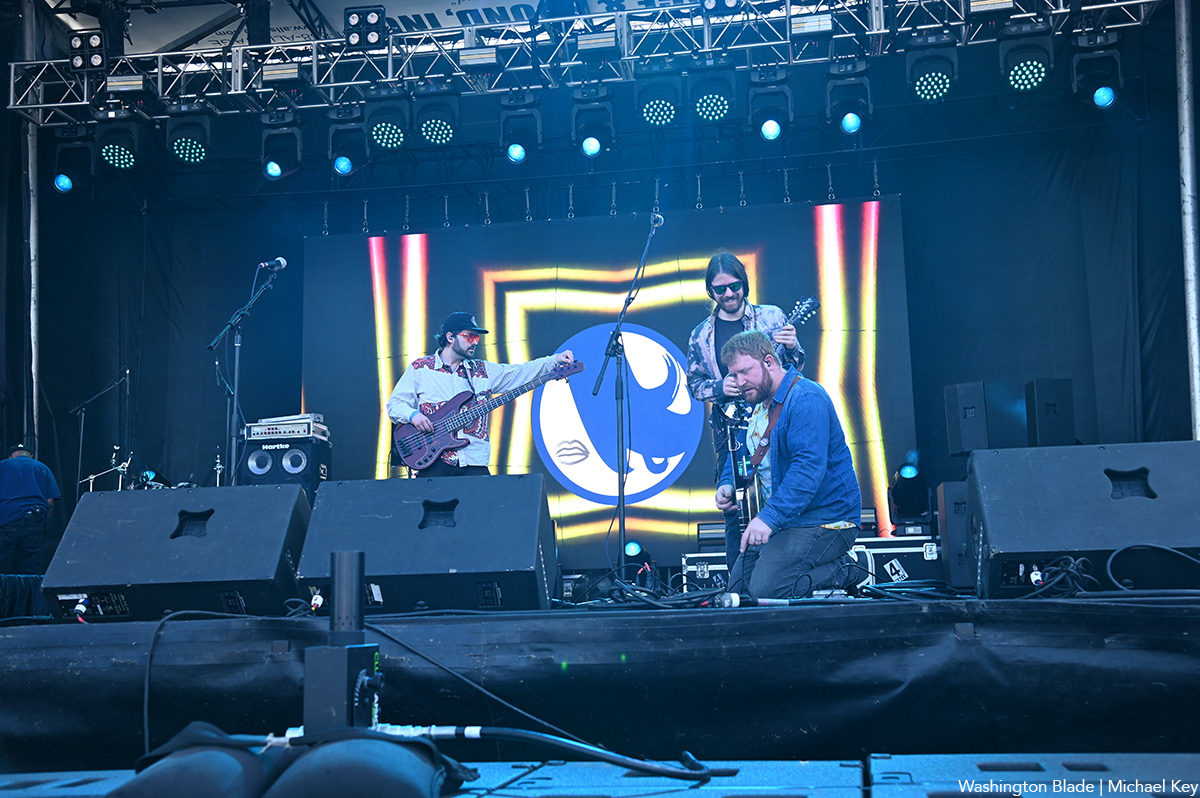
Covering the @NatlCannaFest at RFK Stadium for @WashBlade . Stop by the LGBTQ+ booth and pick up a paper if you are here. pic.twitter.com/is7hnsaPns
— Michael Patrick Key (@MichaelKeyWB) April 20, 2024
Theater
‘Amm(i)gone’ explores family, queerness, and faith
A ‘fully autobiographical’ work from out artist Adil Mansoor
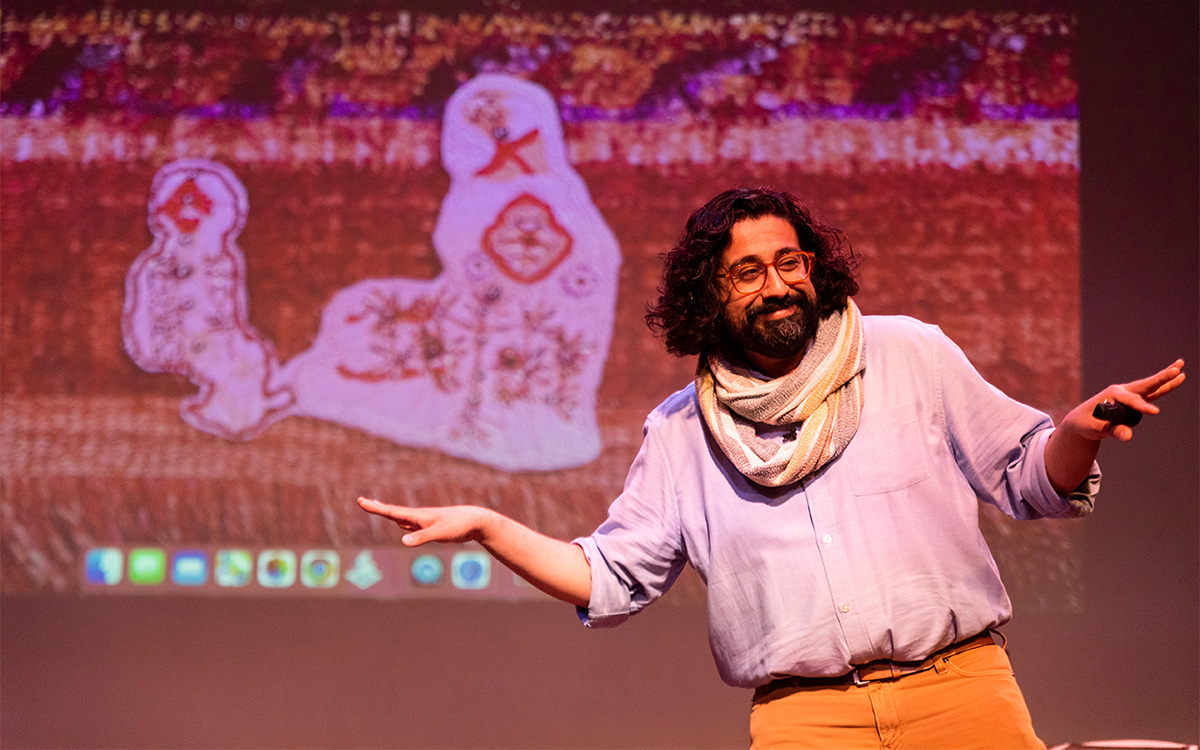
‘Amm(i)gone’
Thorough May 12
Woolly Mammoth Theatre
641 D St., N.W.
$60-$70
Woollymammoth.net
“Fully and utterly autobiographical.” That’s how Adil Mansoor describes “Amm(i)gone,” his one-man work currently playing at Woolly Mammoth Theatre.
Both created and performed by out artist Mansoor, it’s his story about inviting his Pakistani mother to translate Sophocles’s Greek tragedy “Antigone” into Urdu. Throughout the journey, there’s an exploration of family, queerness, and faith,as well as references to teachings from the Quran, and audio conversations with his Muslim mother.
Mansoor, 38, grew up in the suburbs of Chicago and is now based in Pittsburgh where he’s a busy theater maker. He’s also the founding member of Pittsburgh’s Hatch Arts Collective and the former artistic director of Dreams of Hope, an LGBTQ youth arts organization.
WASHINGTON BLADE: What spurred you to create “Amm(i)gone”?
ADIL MANSOOR: I was reading a translation of “Antigone” a few years back and found myself emotionally overwhelmed. A Theban princess buries her brother knowing it will cost her, her own life. It’s about a person for whom all aspirations are in the afterlife. And what does that do to the living when all of your hopes and dreams have to be reserved for the afterlife?
I found grant funding to pay my mom to do the translation. I wanted to engage in learning. I wanted to share theater but especially this ancient tragedy. My mother appreciated the characters were struggling between loving one another and their beliefs.
BLADE: Are you more director than actor?
MANSOOR: I’m primarily a director with an MFA in directing from Carnegie Mellon. I wrote, directed, and performed in this show, and had been working on it for four years. I’ve done different versions including Zoom. Woolly’s is a new production with the same team who’ve been involved since the beginning.
I love solo performance. I’ve produced and now teach solo performance and believe in its power. And I definitely lean toward “performance” and I haven’t “acted” since I was in college. I feel good on stage. I was a tour guide and do a lot of public speaking. I enjoy the attention.
BLADE: Describe your mom.
MANSOOR: My mom is a wonderfully devout Muslim, single mother, social worker who discovered my queerness on Google. And she prays for me.
She and I are similar, the way we look at things, the way we laugh. But different too. And those are among the questions I ask in this show. Our relationship is both beautiful and complicated.
BLADE: So, you weren’t exactly hiding your sexuality?
MANSOOR: In my mid-20s, I took time to talk with friends about our being queer with relation to our careers. My sexuality is essential to the work. As the artistic director at Dreams of Hope, part of the work was to model what it means to be public. If I’m in a room with queer and trans teenagers, part of what I’m doing is modeling queer adulthood. The way they see me in the world is part of what I’m putting out there. And I want that to be expansive and full.
So much of my work involves fundraising and being a face in schools. Being out is about making safe space for queer young folks.
BLADE: Have you encountered much Islamophobia?
MANSOOR: When 9/11 happened, I was a sophomore in high school, so yes. I faced a lot then and now. I’ve been egged on the street in the last four months. I see it in the classroom. It shows up in all sorts of ways.
BLADE: What prompted you to lead your creative life in Pittsburgh?
MANSOOR: I’ve been here for 14 years. I breathe with ease in Pittsburgh. The hills and the valleys and the rust of the city do something to me. It’s beautiful, it’ affordable, and there is support for local artists. There’s a lot of opportunity.
Still, the plan was to move to New York in September of 2020 but that was cancelled. Then the pandemic showed me that I could live in Pittsburgh and still have a nationally viable career.
BLADE: What are you trying to achieve with “Amm(i)gone”?
MANSOOR: What I’m sharing in the show is so very specific but I hear people from other backgrounds say I totally see my mom in that. My partner is Catholic and we share so much in relation to this.
I hope the work is embracing the fullness of queerness and how means so many things. And I hope the show makes audiences want to call their parents or squeeze their partners.

